

Vision Zero Action Planning:
A Regionally Localized Approach
2025 Florida Planning Conference
August 17, 2025
3

2.4M
MetroPlan Orlando by the Numbers counties cities people visitors
22 75M
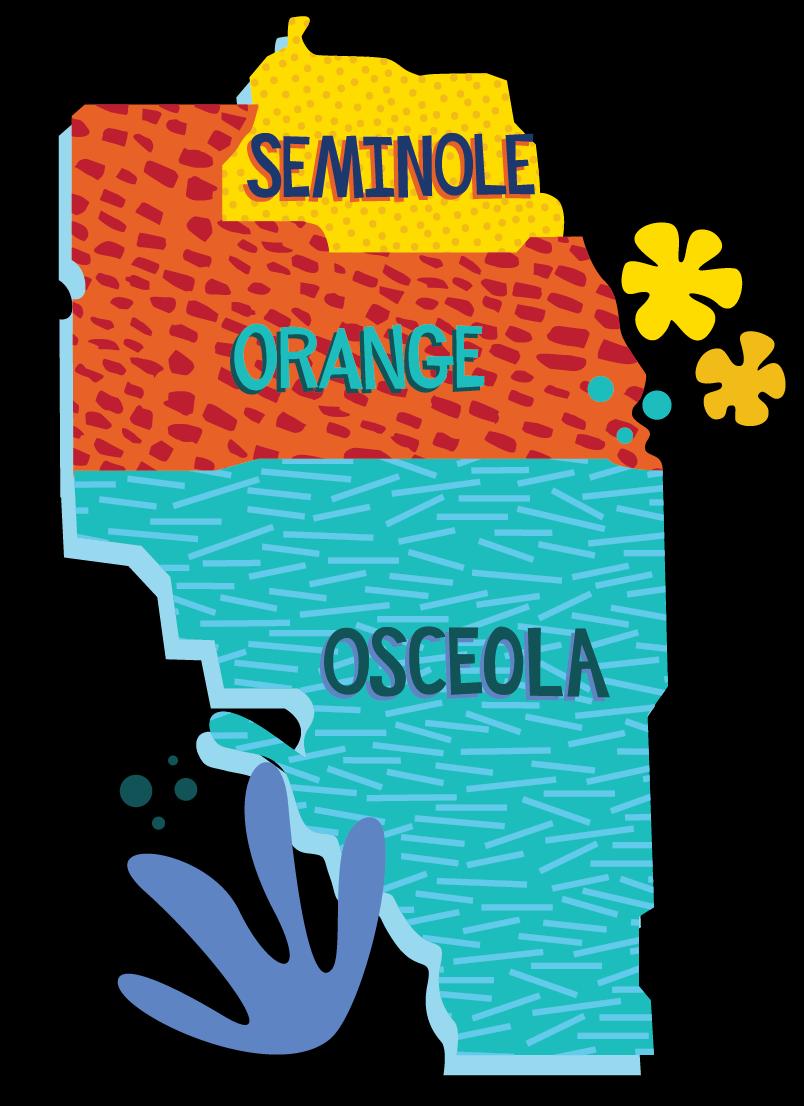

Vision Zero Central Florida


5 fatalities, 35 series injuries weekly in Central Florida
Partnership Scale of Effort

Orange County
Apopka
Belle Isle
Eatonville
Edgewood
Maitland
Oakland
Windermere
Winter Garden
Winter Park
Osceola County
Kissimmee
St. Cloud
Seminole County
Altamonte Springs
Casselberry
Lake Mary
Longwood
Oviedo
Sanford
Winter Springs
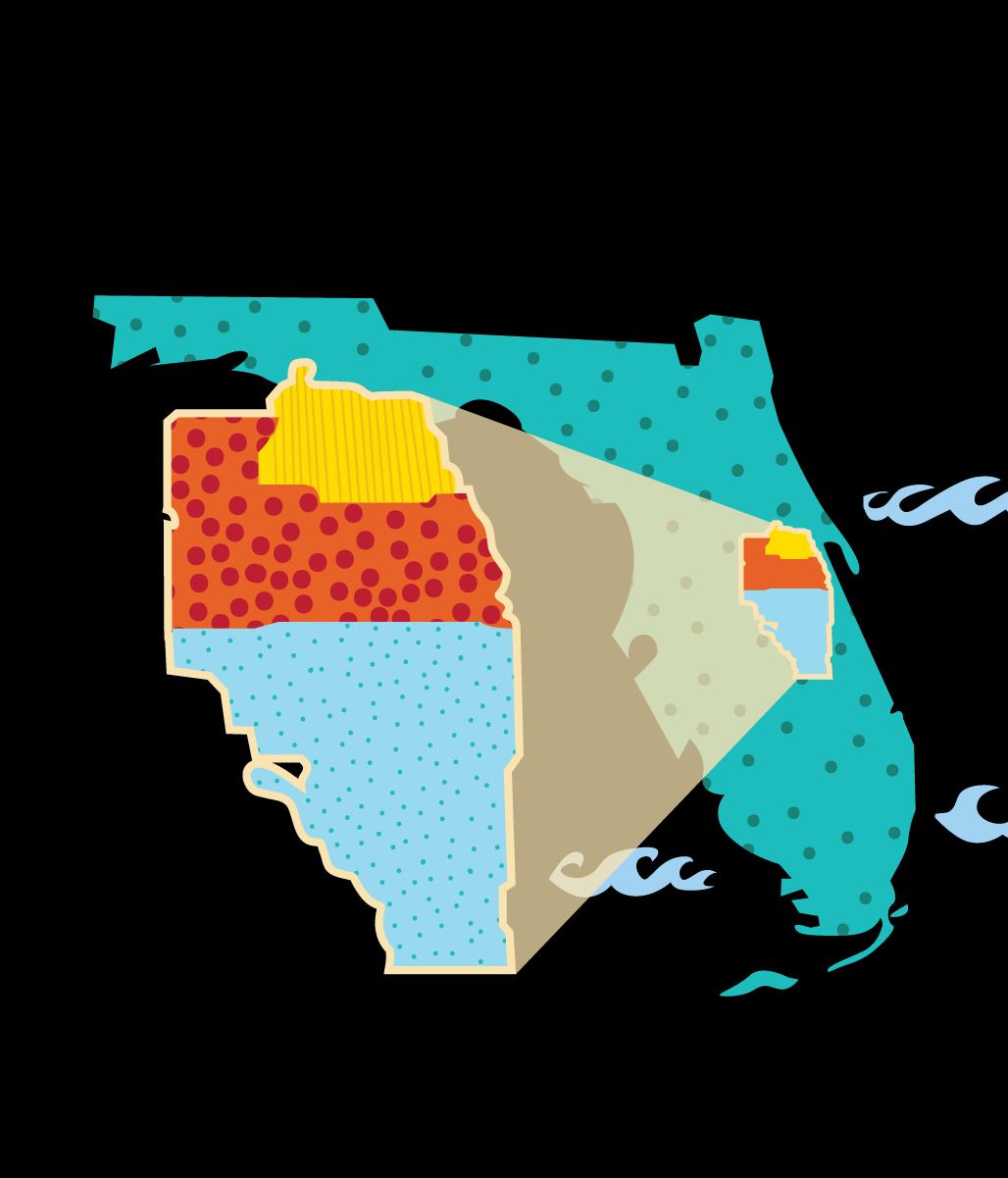
Structure & Staffing
Top-Down & Bottom-Up


• Each jurisdiction appointed a Local Agency Project Manager
• MPO provided Consultants and a Project Coordinator (MPO staff)
• Tailored scope of services was developed in partnership with each jurisdiction
Guiding the Process

1 Regional Task Force
3 County Steering Committees
19 Local Working Groups
Regional Task Force Composition
• Local Government Planners & Engineers
• State Department of Transportation
• Regional Transit Authority (LYNX)
• Bike/Ped Advocacy (Non-Profit)
• National Safety Council
• Regional Chamber of Commerce
• Public Schools
• Law Enforcement / Investigation
• Emergency Response
• Regional Hospitals (Post Crash Care)
• State Department of Health
• AARP / Elderly Population
• Citizen Advocates
Public Participation
Meaningful Engagement

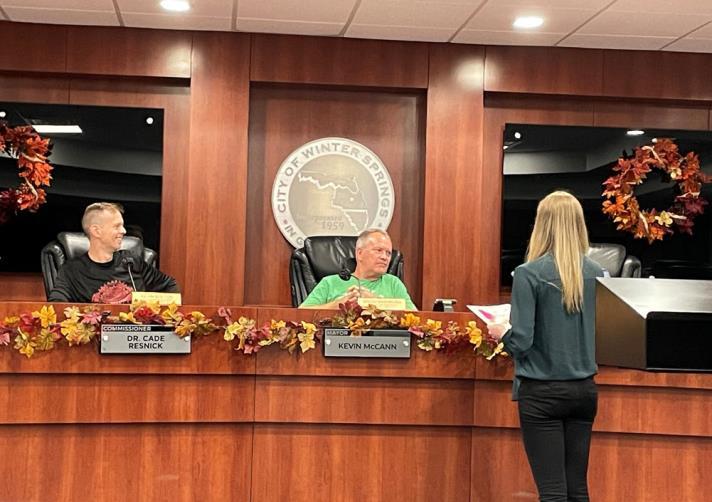
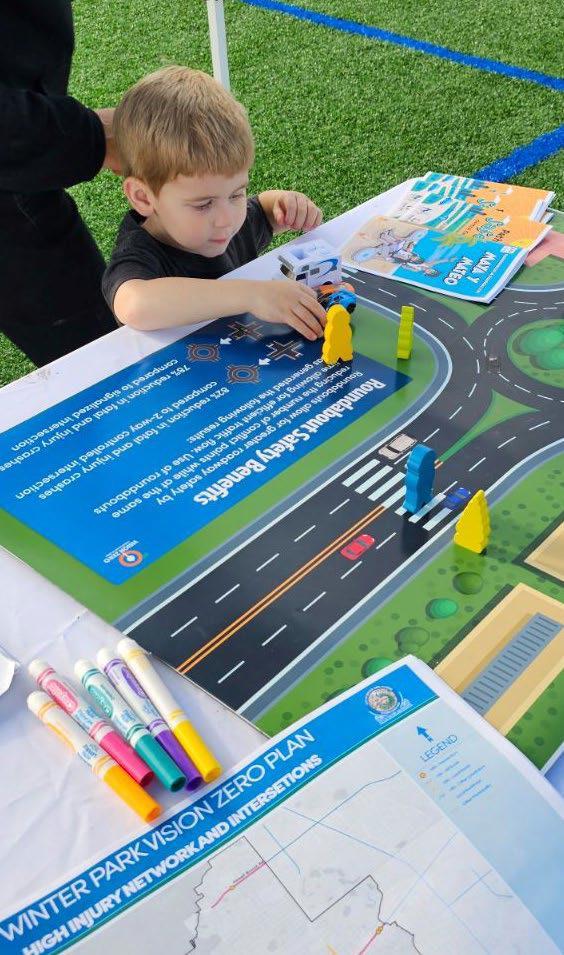
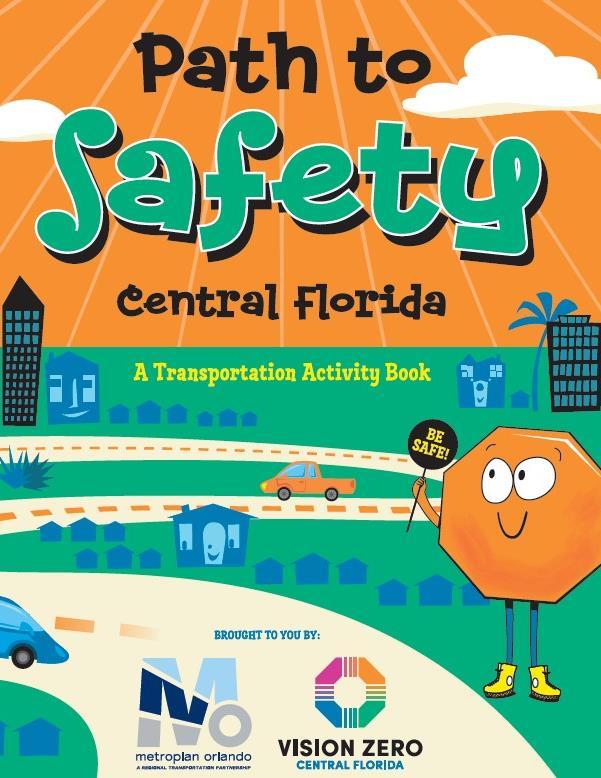
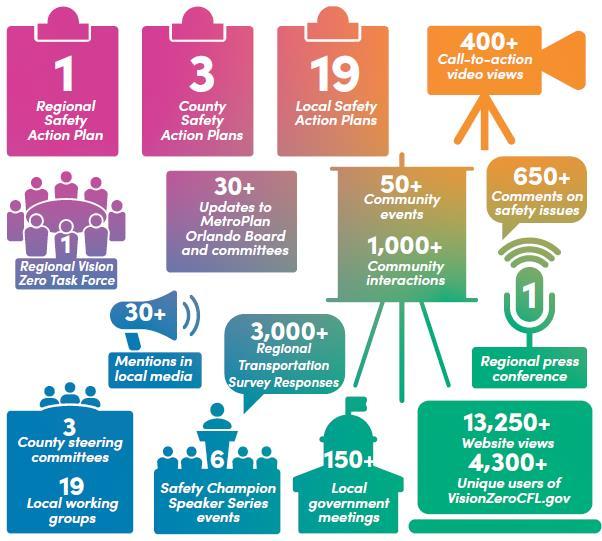


High Injury Network Evaluation

• Safety Score
• Total number of crashes, highest level of injury sustained, and travel mode
• More weight given to crashes that result in death or serious injury or involved vulnerable road users
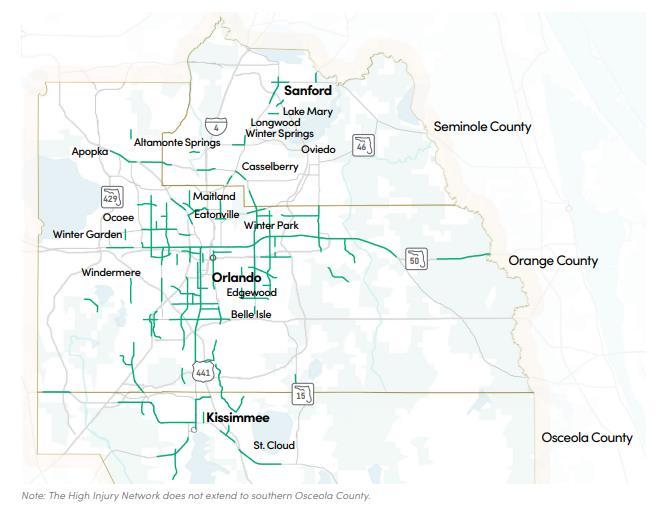
41% of all traffic deaths happen on just 2% of our road network
Project Development Process

• Systemic Improvements
• Priority Corridors
• Identify Planned Improvements
• Potential Countermeasures
• Prioritize Projects
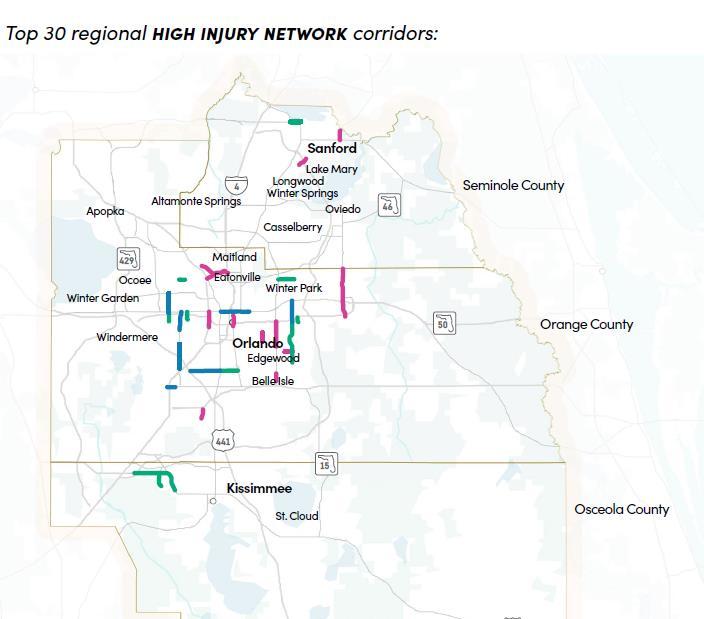

Toolkits

Engineering countermeasures promote street designs that protect people when mistakes happen, instead of making mistakes worse

Non-engineering countermeasures aim to change the social environment to encourage or enforce safer behavior
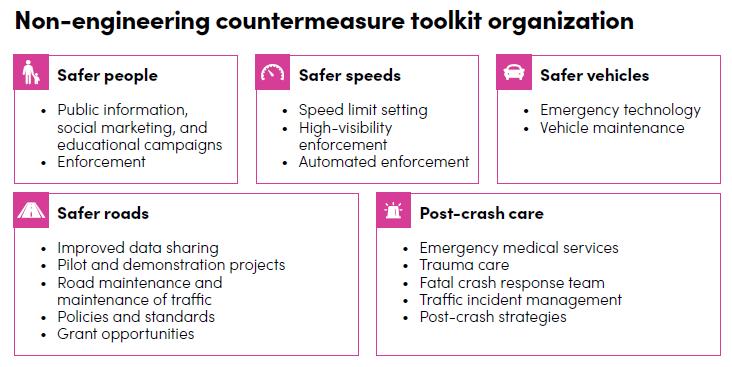

Benchmarking

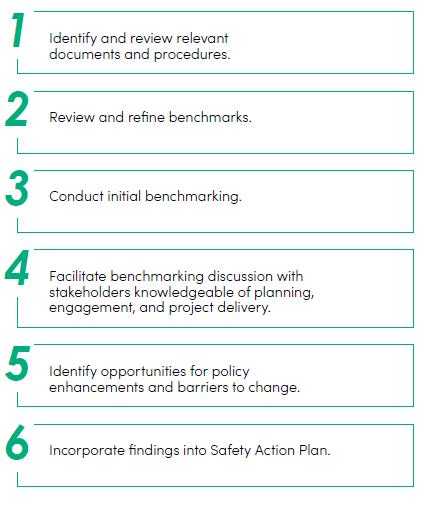

We have a Plan...
Regional Safety Action Plan
Executive Summary
Chapter 1: Need for a Transportation Safety Plan
Chapter 2: Understanding the Crash Trends
Chapter 3: Listening to the Community
Chapter 4: Toolkit of Strategies
Chapter 5: Project Development
Chapter 6: Plan of Action
Chapter 7: Monitoring and Implementation
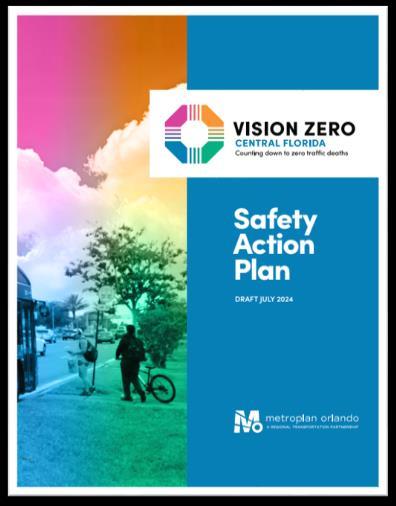
Beyond Plan Adoption
• Coordination with local partners
• Demonstration Activities
• Working the Plan

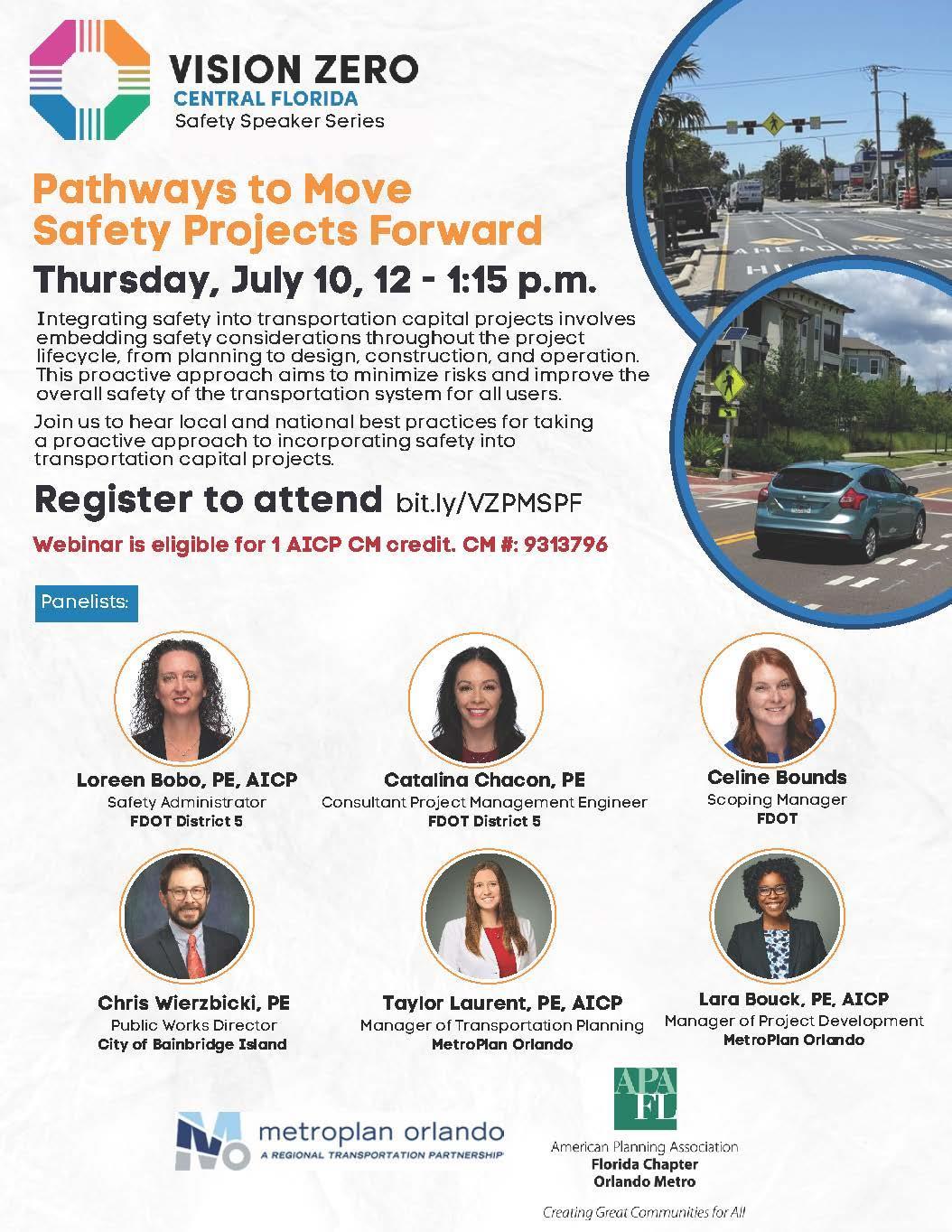
Seminole
County Demonstration
Deployment of Near-Miss Monitoring at 15 County Intersections
• Findings and Opportunities
• Data Gold Mine
• Near-Miss Heat Mapping
• New Safety Focus Areas Identified
• Actionable Insights
• Challenges Encountered
• Software startup time
• Camera Issues
• Calculation Errors
• # of Intersections


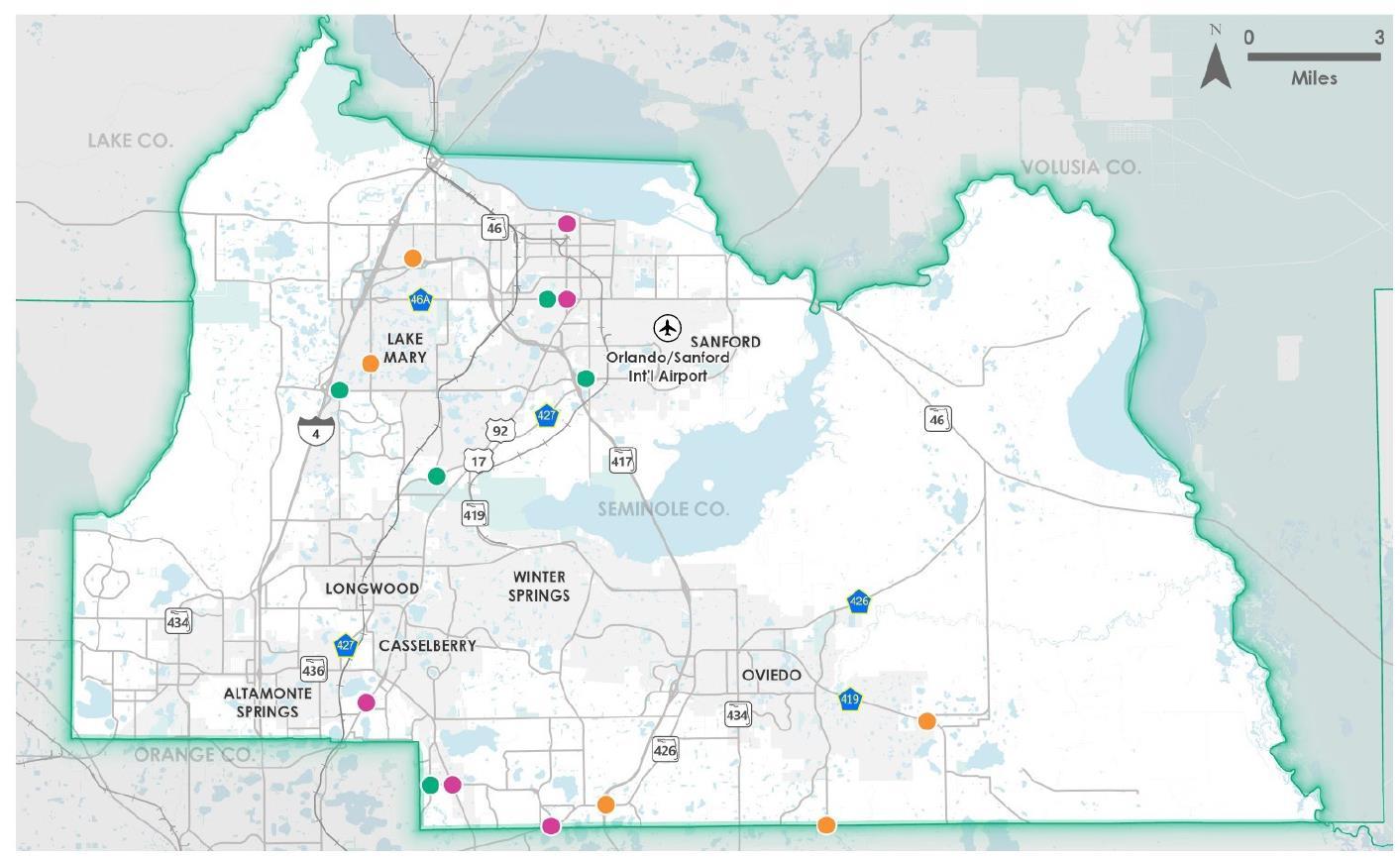
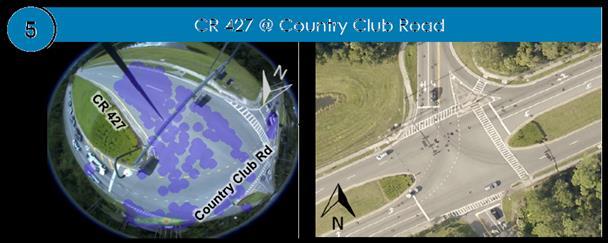
Osceola County Demonstration
Evaluation of pedestrian and bicycle crossings at targeted intersections on the HIN
Systemic Approach
Implement similar types of improvements at other locations throughout the county that demonstrate similar characteristics and needs


Orange County Demonstration
Bike Safety Club for Middle School Students

• “Bike Safety Program-in-a-Box”
• Curriculum
• Promotional/administrative materials
• Program tracking/evaluation materials
• Next Steps:
• Recruit instructors
• Pilot implementation

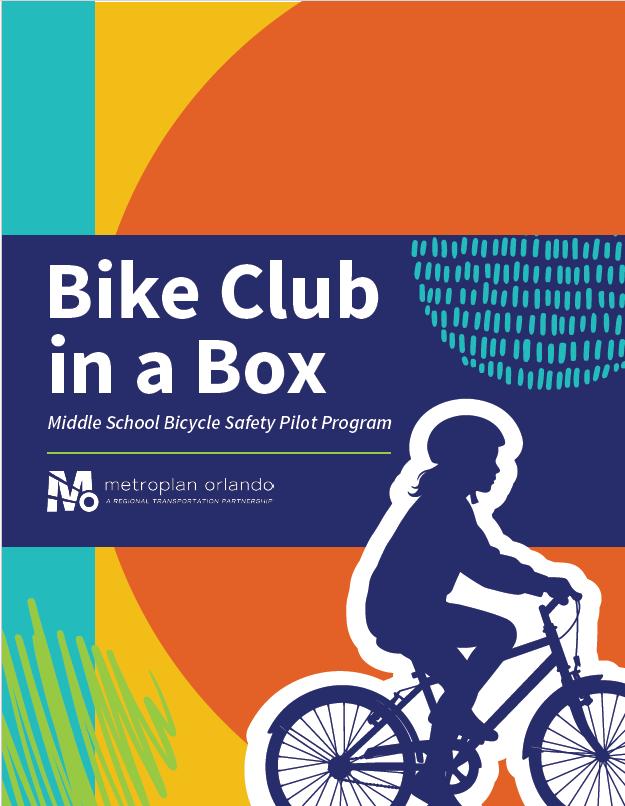
Regional Safety Action Plan
Leadership and Commitment
Align the Safety Action Plan and 2050 MTP Provide more details on safety projects
Establish ongoing VZ Task Force Establish community partner network
Safe Roads and Speeds
Explore using speed reduction as an evaluation criteria
Lead Road Safety Audits on the HIN
Data, Transparency and Accountability
Participate in FDOT safety coalitions

Report on annual crash data
Serve as a regional data clearinghouse
Completed On-Going Progress to Date
Adopt a VZ Resolution
Identify grant opportunities
Continue targeted outreach
Develop educational materials
Conduct before and after studies of projects
Regional Safety Action Plan
Leadership and Commitment

Safe Roads and Speeds
On Deck
Data, Transparency and Accountability
Join the VZ Network
Join the VZ Network
Provide VZ and SS training to 1st responders
Promote safety-related legislation
Regularly update the Regional VZAP
Support incorporation of safety into development review process
Implement safety-focused performance measures
Provide guidance on updating construction-related traffic regulations
Support SRTS projects
Build crash modification factors into project prioritization
Formalize target speed setting
Formalize target speed setting
Pilot using signal timing to regulate speeds
Pilot using signal timing to regulate speeds
Develop a Complete Streets Policy Template
Support incorporating safety into road design standards
Advance a regional 20mph residential speed limit
Study involvement of unhoused people in crashes
Study involvement of unhoused people in crashes
Identify locations with underreported crashes
Identify locations with underreported crashes
Evaluate enforcement outcomes
Develop an emergency vehicle preemption plan
Evaluate effectiveness of existing MPOfunded pedestrian safety educational programs
Test new safety strategies in the region


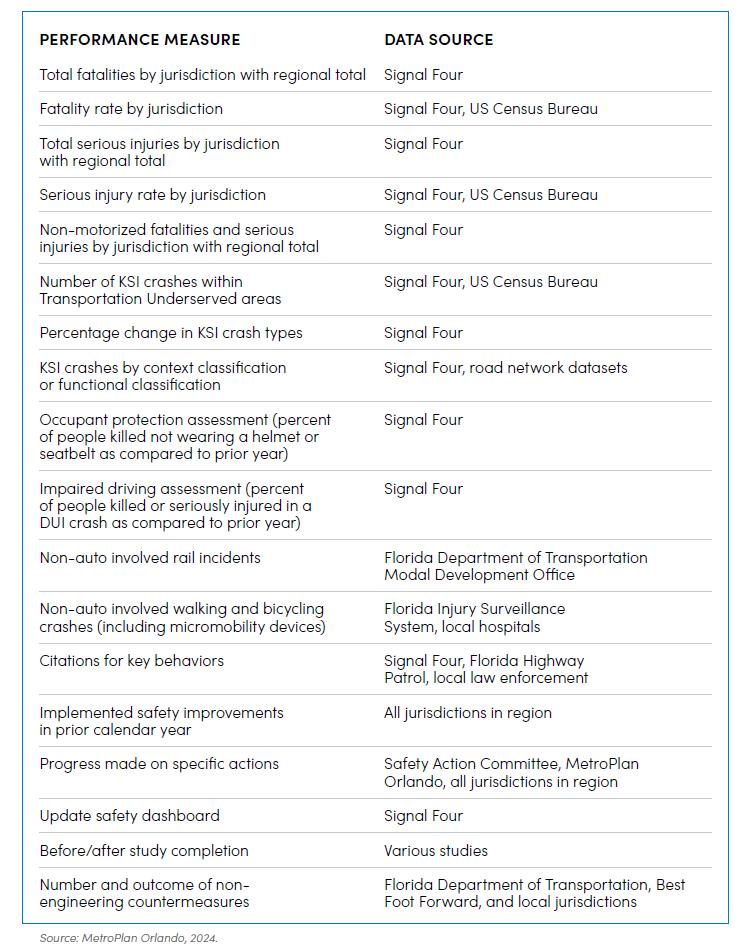

SS4A – Supplemental Planning Grant

• Awarded November 2024
• Supplemental Planning Grant Activities
• Continue safety-focused outreach
• Data refinements/updates
• Conduct Roadway Safety Audits/Evaluations on the HIN
• Updates to Regional VZAP






Orange County Vision Zero Action Plan & Accelerated Transportation Safety Program Public Works Department


Humberto Castillero, P.E., PTOE


Purpose ▪Background
▪Vision Zero Action Plan Overview
▪Strategy
▪Accelerated Transportation Safety Program
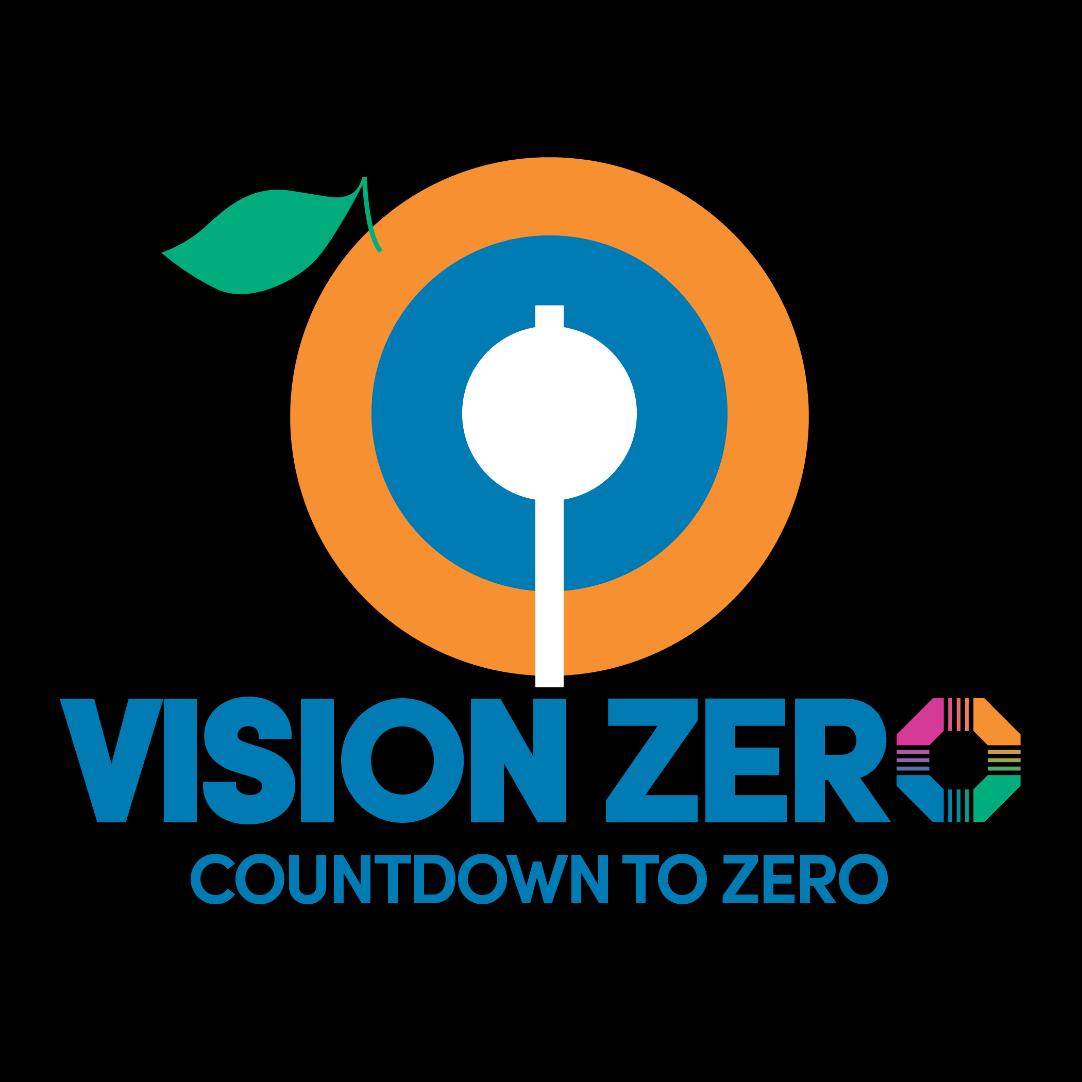

Purpose

▪Overview of the Orange County Vision Zero Action Plan (VZAP) to eliminate fatalities and severe injuries by 2040
▪Discuss key components of the VZAP
▪Implement the Vision Zero Initiative countywide under the “Safety First” culture


Purpose
▪Background
▪Vision Zero Action Plan Overview
▪Strategy
▪Accelerated Transportation Safety Program
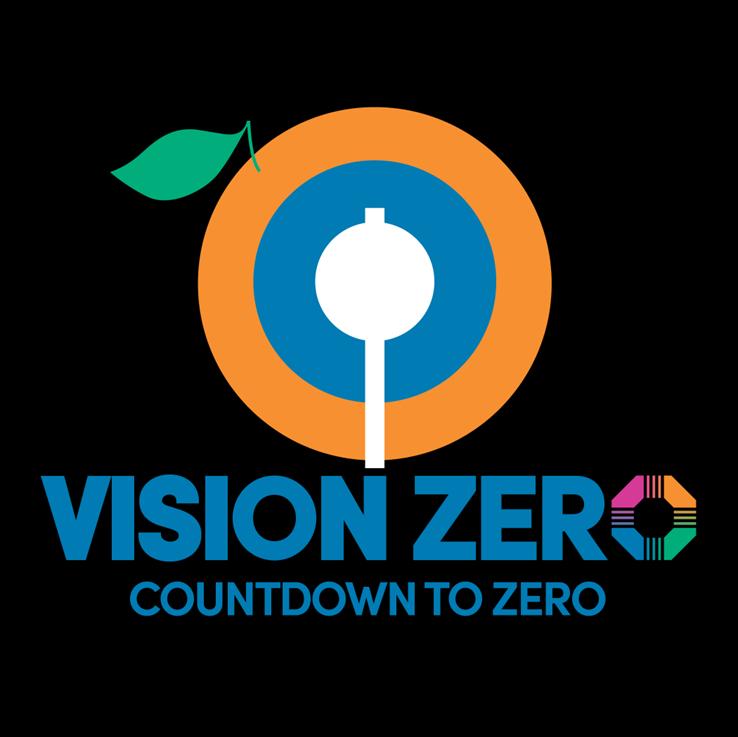


▪National statistics from the 2024 Dangerous By Design report continues to rank the Orlando-Kissimmee-Sanford, FL (#18) within the top twenty nation wide metro areas with increasing rates of vulnerable users’ deaths #18 Orlando-Kissimmee-Sanford
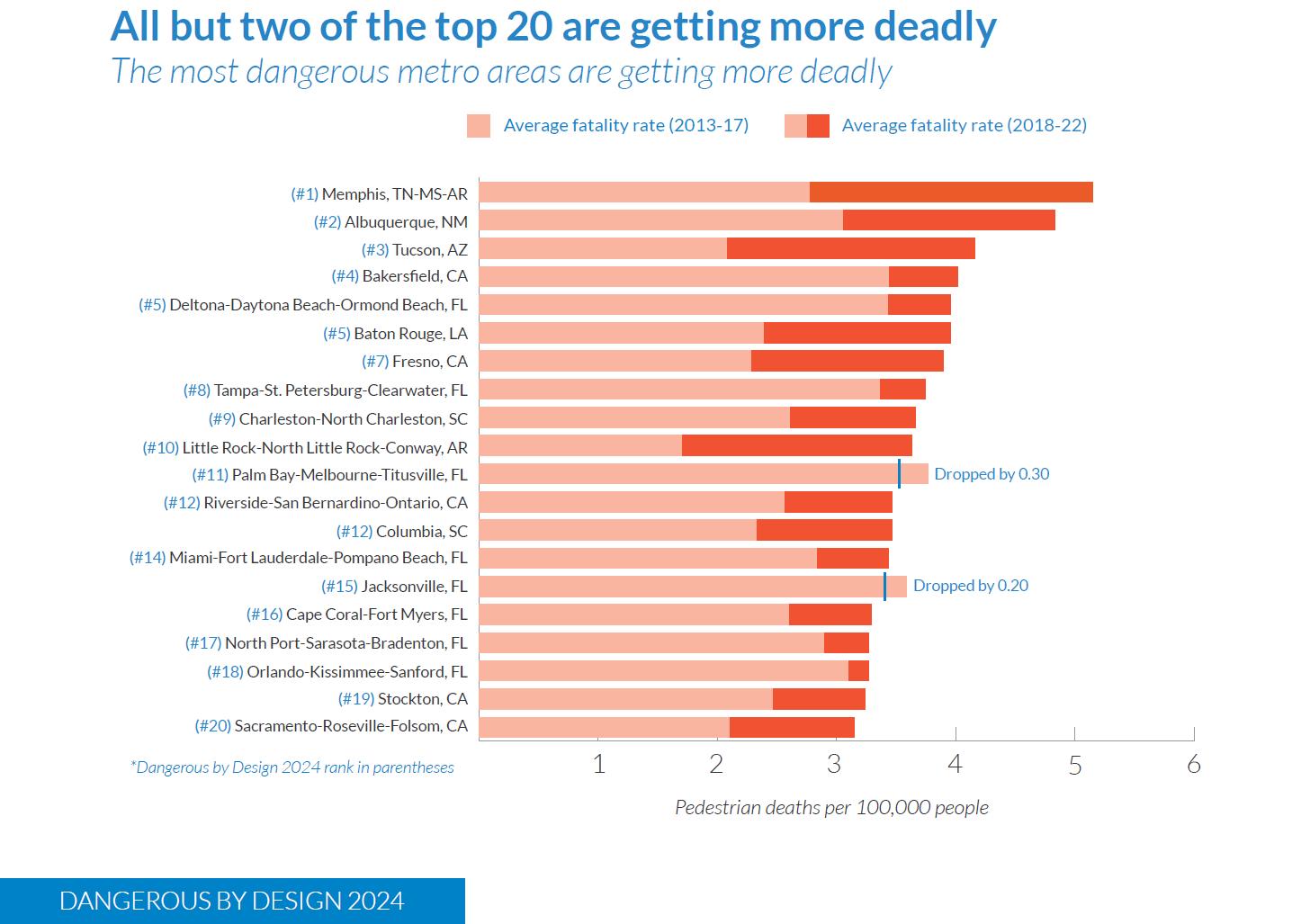

Fatalities and severe injuries continue to be an epidemic

Background

▪Orange County approved on August 27, 2024, the Vision Zero Action Plan (VZAP) to eliminate fatalities and severe injuries by 2040
▪VZAP will implement proven safety countermeasures
▪VZAP will create the framework and strategy for achieving the Orange County safety goals

Background

▪The residents of Central Florida are demanding that our agencies collaborate and solve safety concerns, calling for strategic partnerships amongst FDOT, MPO, OCSO, OCPS, counties and municipalities

Innovation Collaboration Inclusion
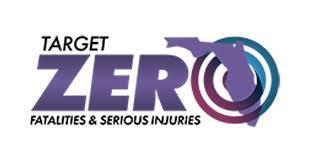




▪Purpose
▪Background
▪Vision Zero Action Plan Overview
▪Strategy
▪Accelerated Transportation Safety Program


Vision Zero Action Plan Overview

▪Vision Zero Action Plan is organized into 6 main Chapters
–Chapter 1: Introduction
–Chapter 2: Crash Analysis and Trends
–Chapter 3: Public Engagement
–Chapter 4: Policy Review and Benchmarking
–Chapter 5: Toolkit and Prioritization
–Chapter 6: Plan Recommendations
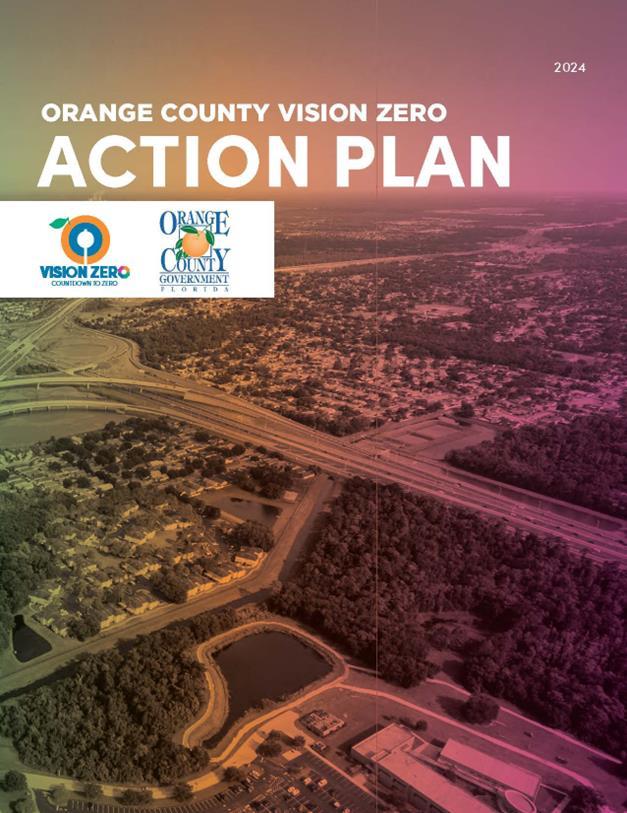


Vision Zero Action Plan Overview
Chapter 1: Introduction

▪Saving lives. That’s what it’s all about. The only acceptable number for traffic deaths is ZERO.
▪Orange County’s 1.4 million residents deserve to travel safely
▪Articulate the County's commitment towards achieving zero road fatalities and serious injuries by 2040
▪Outline a comprehensive, data-driven approach to improving road safety for all users, utilizing the Safe System Approach



Vision Zero Action Plan Overview
Chapter 1: Introduction
▪The Safe System Approach is “Principles Based” to create a safety culture
▪Achieving a Safe Systems requires all five elements
▪Safe Roads is a continuum, not an absolute




Vision Zero Action Plan Overview
Chapter 2: Crash Trends and Analysis

▪A comprehensive understanding of local crash trends
▪Primary data was Signal Four (S4) Analytics crash data
▪The crash analysis within the fiveyear period from 2018 to 2022
▪ Crash patterns were categorized into groups of ‘collision profiles’ for fatalities (K) or serious injuries (SI)
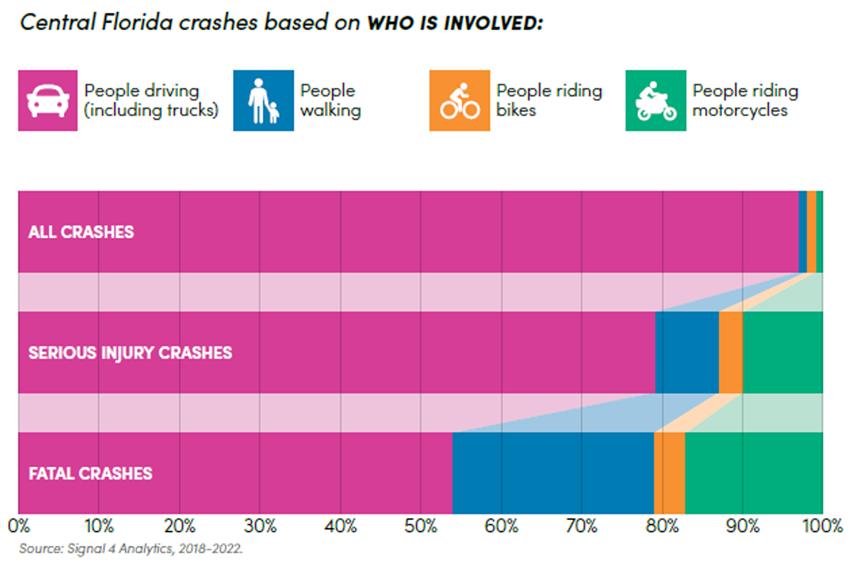



People walking, biking and motorcycling are much more likely to be involved in a serious injury and deadly crashes


Vision Zero Action Plan Overview

Chapter 3: Public Engagement
▪Collaborated with community partners and elected officials
▪Developed social media content for spreading awareness of the public meetings at various outlets
▪Conducted in-person engagements for cross collaboration, promoting a grass roots approach to deal with this fatal crash epidemic
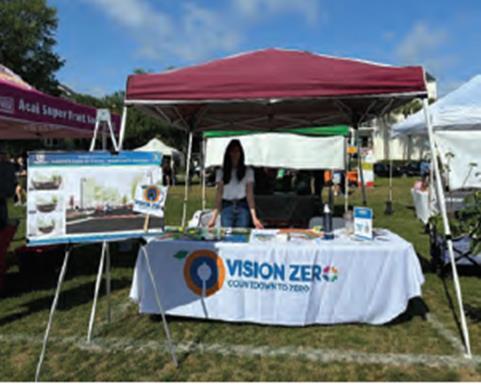
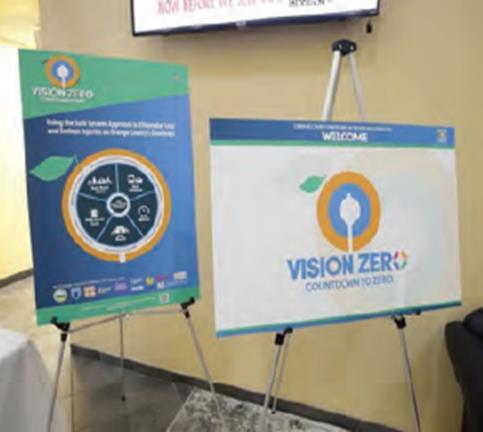






Vision Zero Action Plan Overview
Chapter 4: Policy Review and Benchmarking
▪Conducted a thorough examination of various local, state, & national documents
▪Orange County must continue aligning County’s policies and practices with the Vision Zero principles
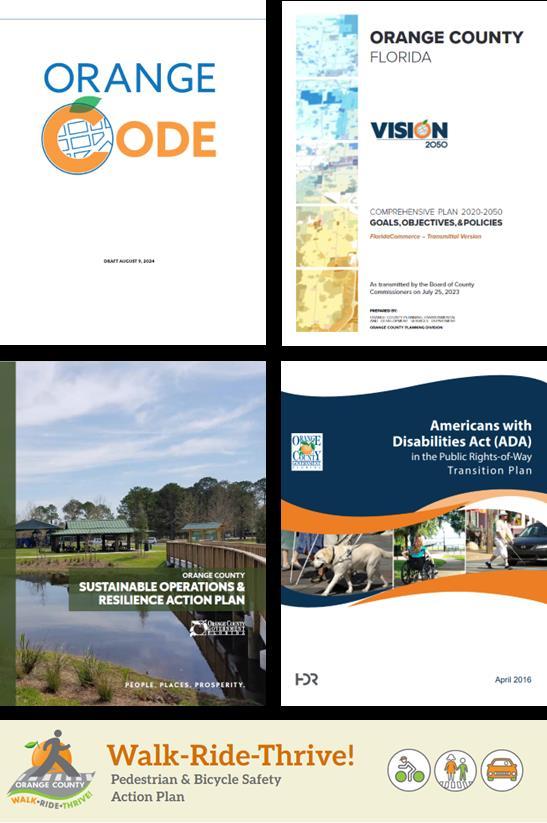


Vision Zero Action Plan Overview

Chapter 5: Toolkit and Prioritization
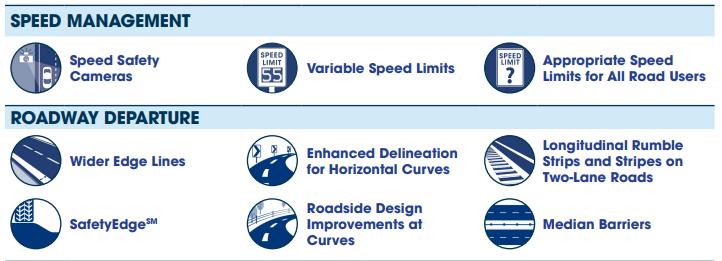







Vision Zero Action Plan Overview
Chapter 5: Toolkit and Prioritization

CATEGORIES
▪ Signals
▪ Signing and Striping
▪ Bikeways
▪ Pedestrian Facilities ▪ Intersection/Roadways ▪ Speed Management ▪ Other Strategies



Vision Zero Action Plan Overview
Chapter 5: Toolkit and Prioritization

Pine Hills Road – Between Silver Star Road and Pinto Way

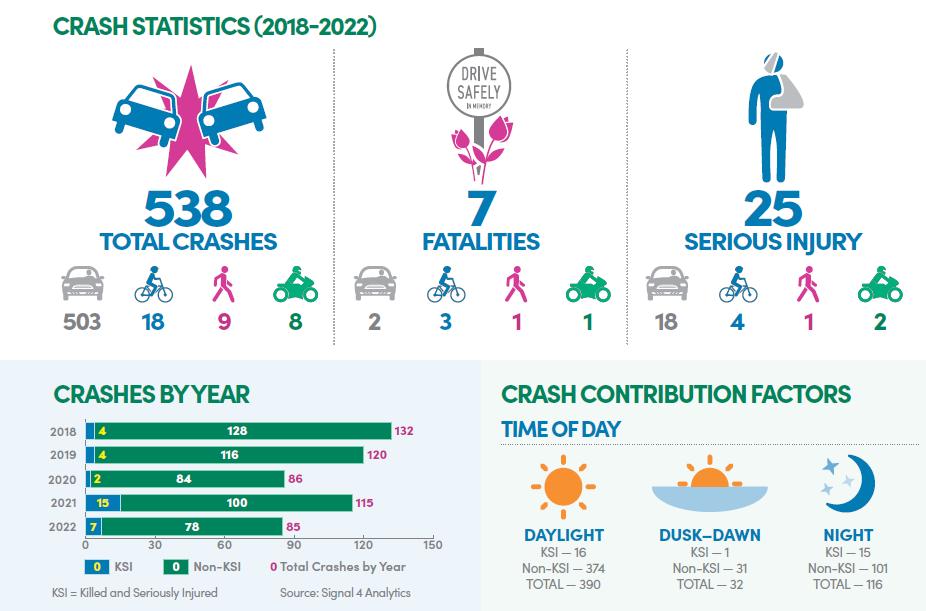
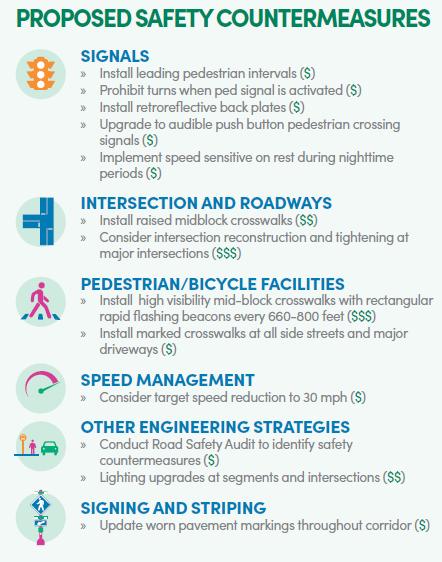


Vision Zero Action Plan Overview
Chapter 6: Plan Recommendations

▪Develop implementation timeline
▪Create performance measures
▪Monitor progress
▪Provide funding for safety projects
▪Track project progress through the dashboard
▪VZAP will be refreshed or updated every five years

Vision Zero Core Elements.
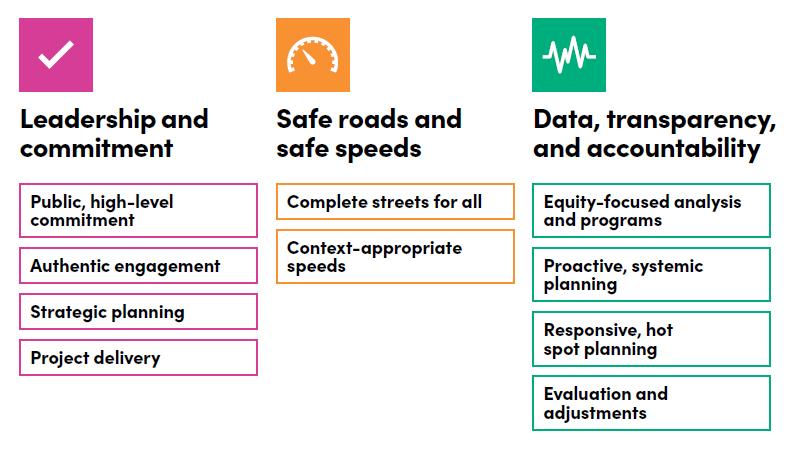


Purpose
▪Background
▪Vision Zero Action Plan Overview
▪Strategy
▪Accelerated Transportation Safety Program
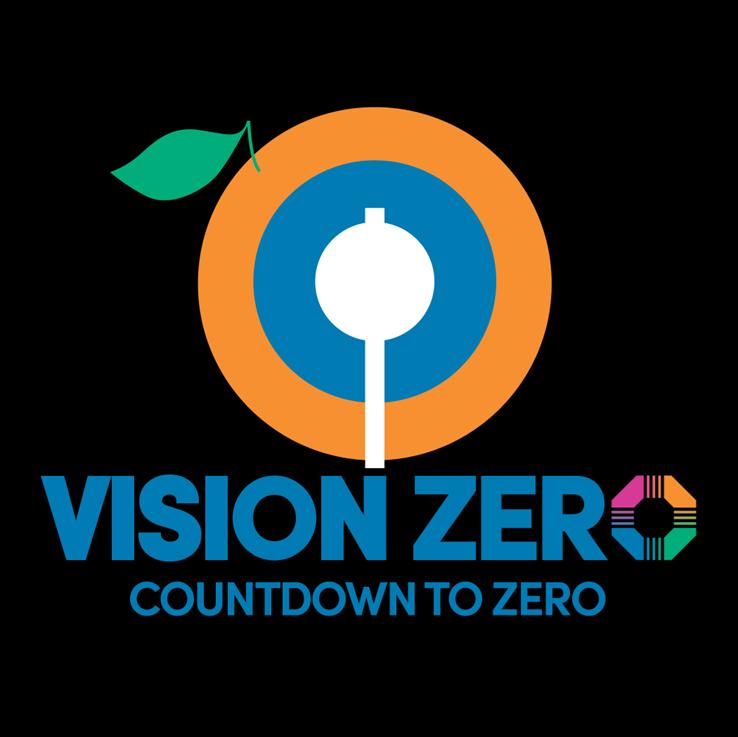

Strategy

▪Rank corridors with high crash rates
▪Select safety countermeasures
▪Budget and schedule projects according to short, medium and long-term implementation phases
▪Provide annual progress reporting to the Board
▪Refresh Vision Zero Action Plan every five years


“Safety First” culture into all Programs, Projects and SOPs



Purpose
▪Background
▪Vision Zero Action Plan Overview
▪Strategy
▪Accelerated Transportation Safety Program
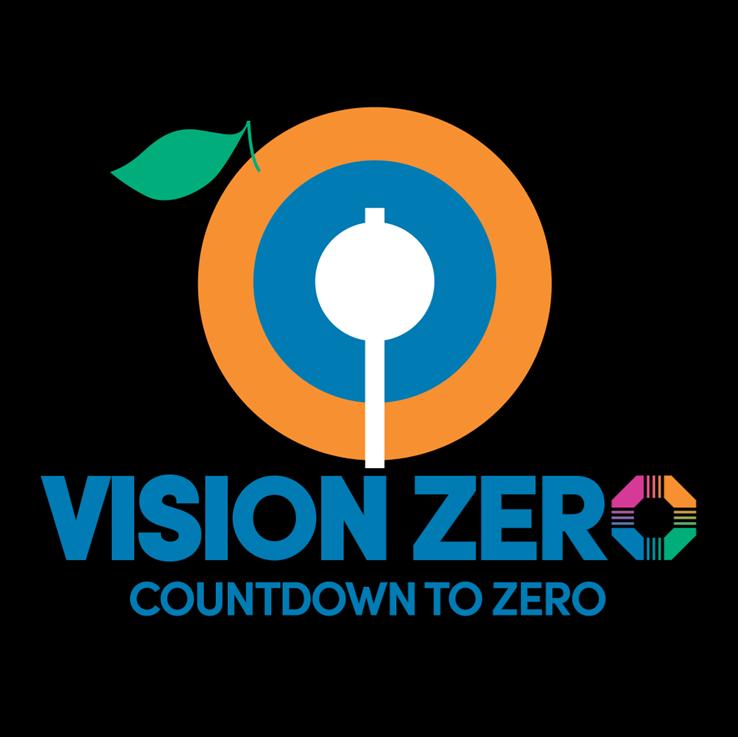

Accelerated Transportation Safety Program


Accelerated

Transportation Safety Program Lighting
▪ Roadway Lighting for pedestrians and drivers
▪ 130+ miles coverage over arterial & collector roadways
▪ Coordination with local utility companies



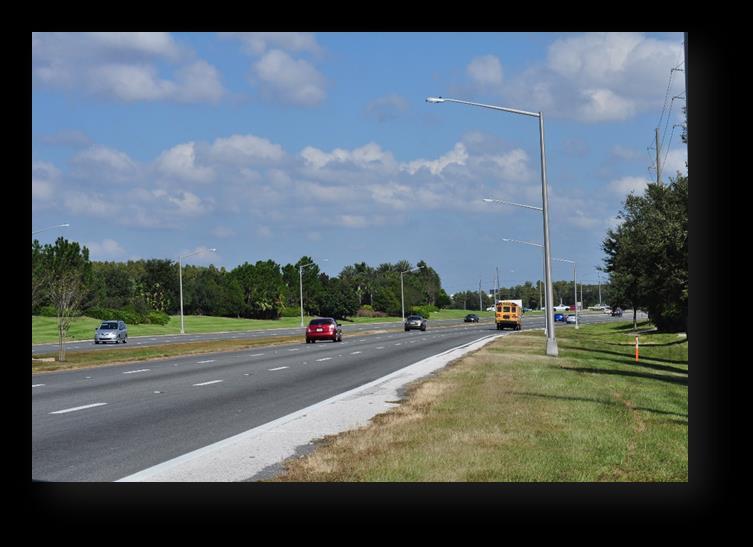

Accelerated

Transportation Safety Program Sidewalks
▪Safe and accessible
▪Improves connectivity between existing sidewalks, transit stops, schools, etc.
▪26 miles of sidewalk countywide
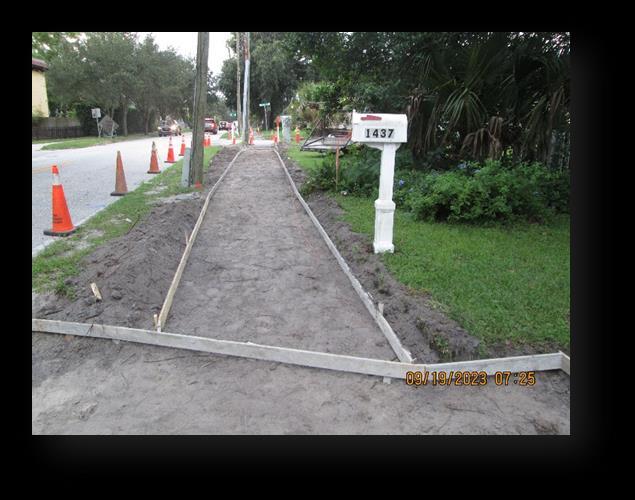
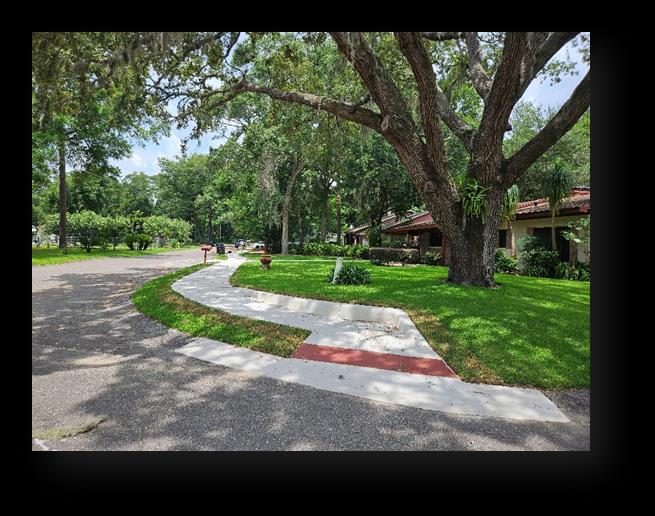

Accelerated Transportation Safety Program Sidewalks

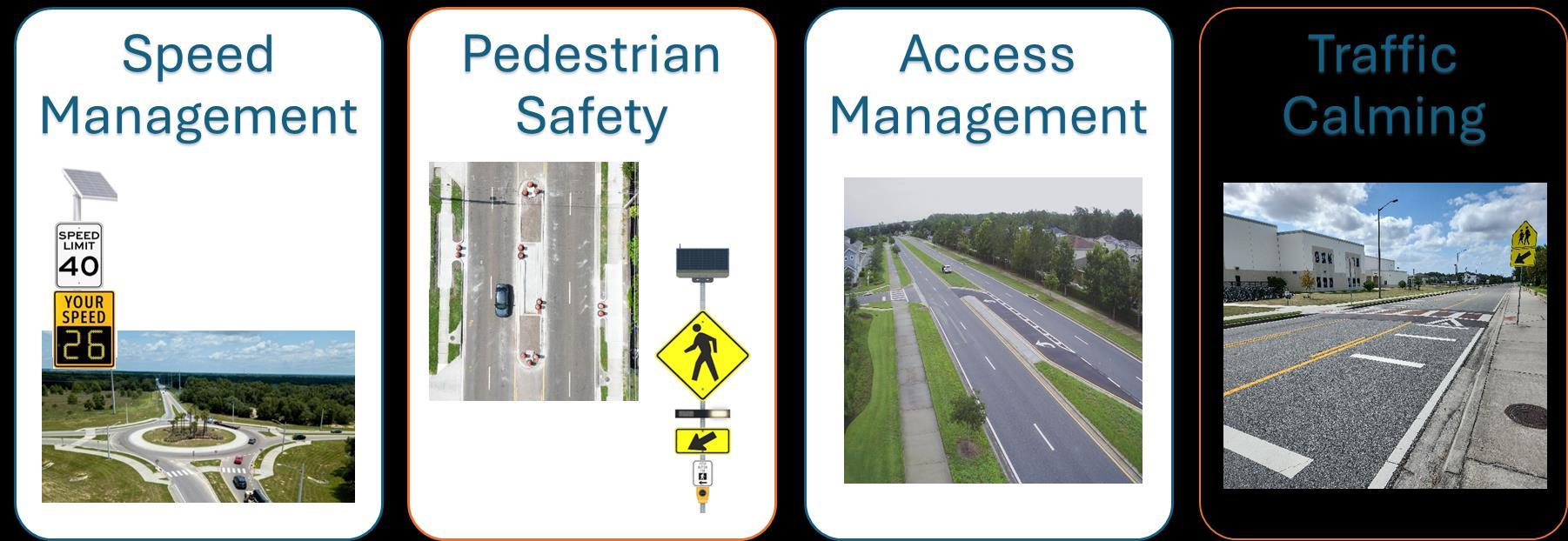

Accelerated Transportation Safety Program Sidewalks

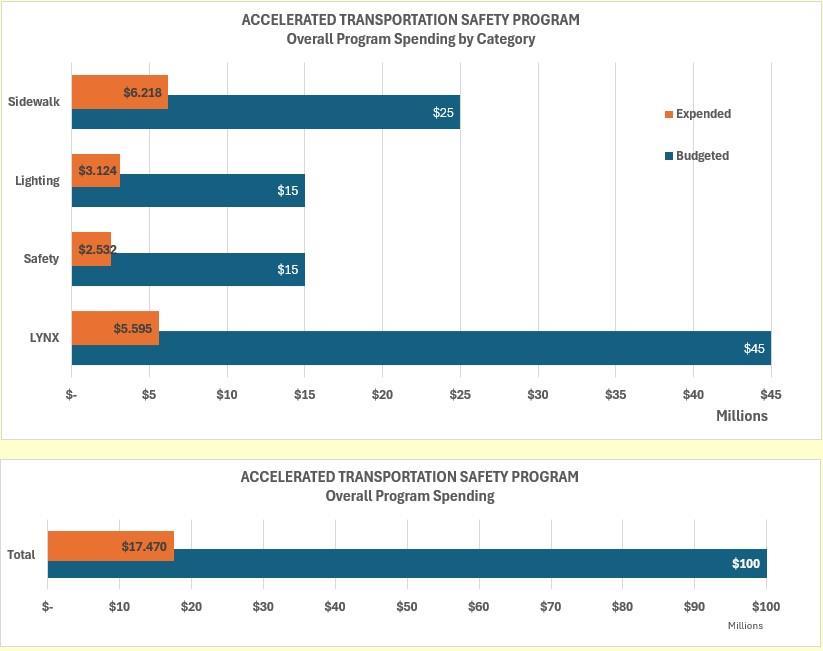
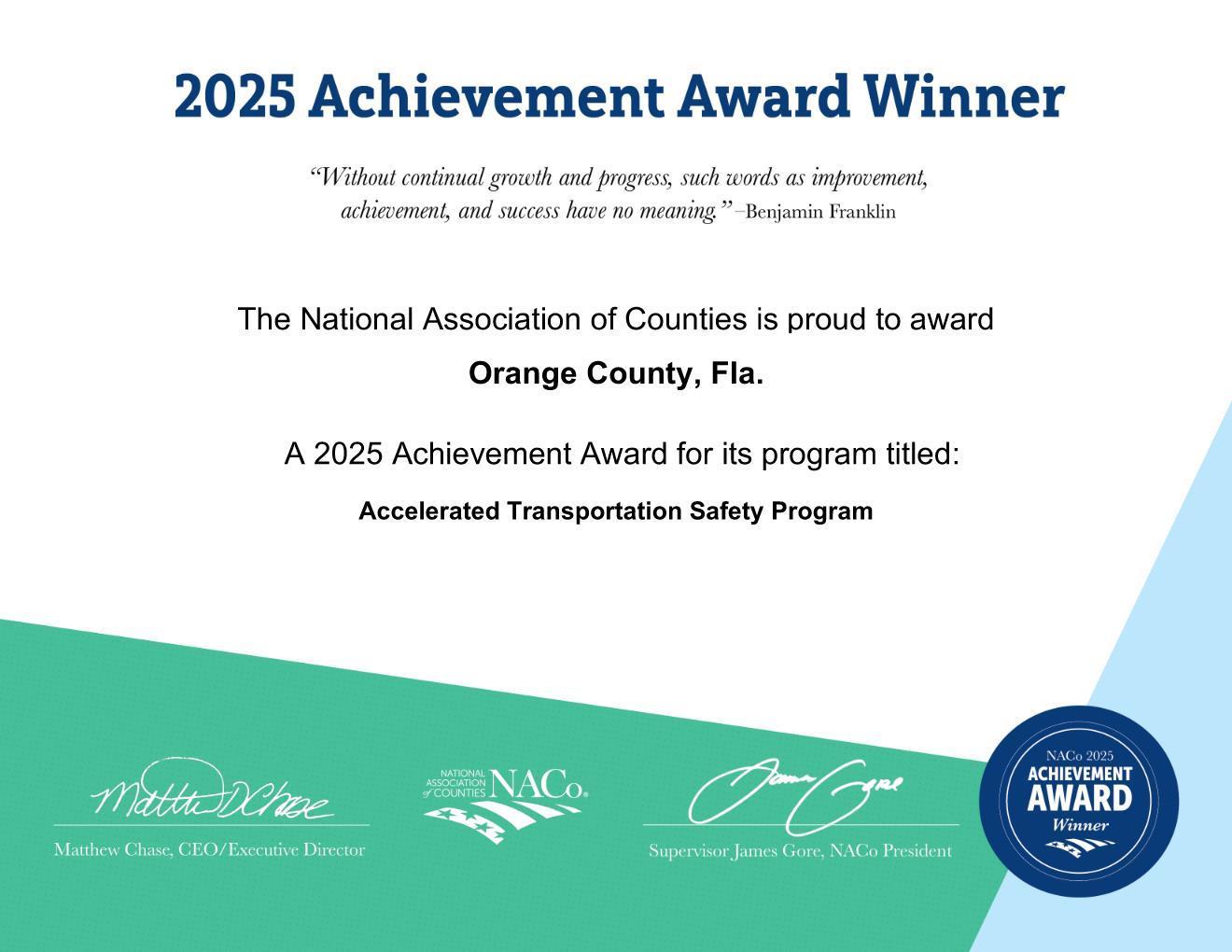
Winter Garden
Vision Zero Safety Action Plan
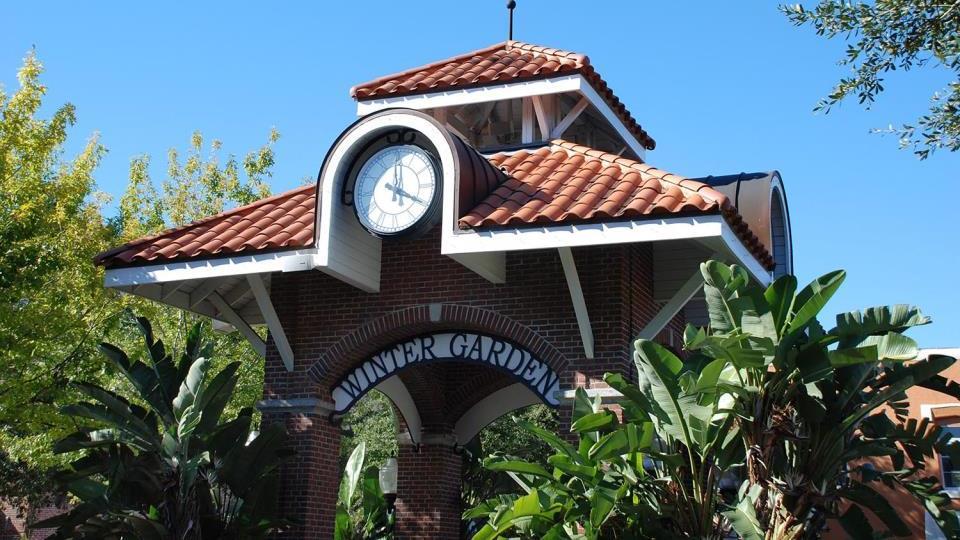
Kelly Carson, Planning Director, City of Winter Garden, Florida
Metroplan Presentation, September 2025
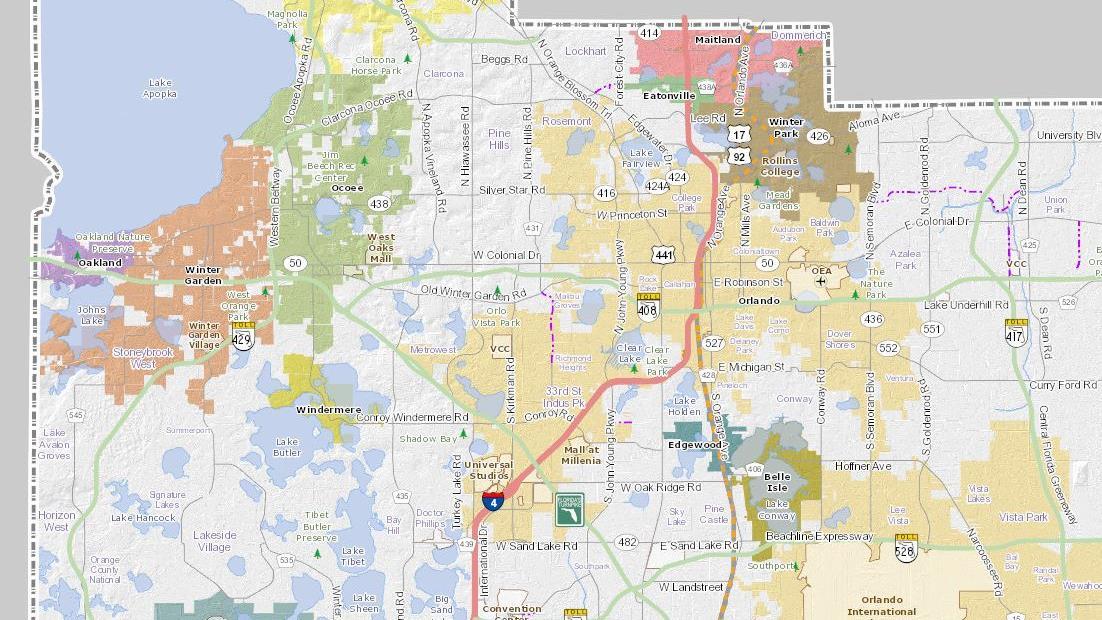
Winter Garden
11,480.9 acres in size
2025 Population 52,479 (BEBR)
2010 Population 34,568 (Census)
Tourist Destination

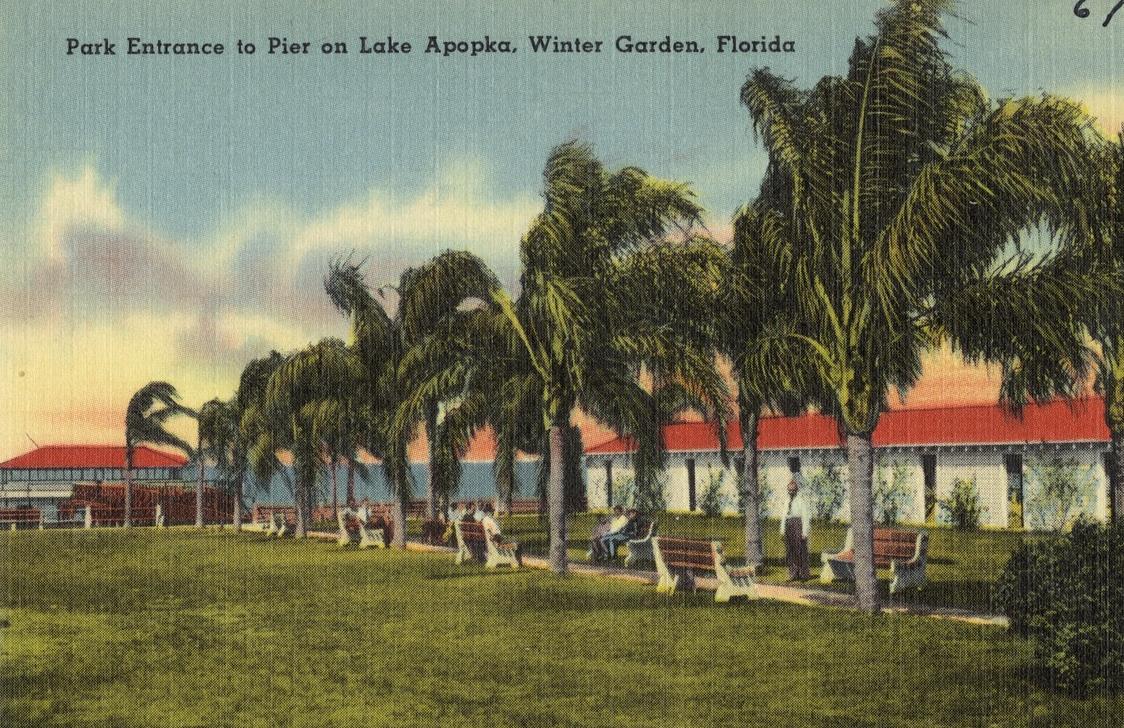
Railroad Downtown






Citrus Groves
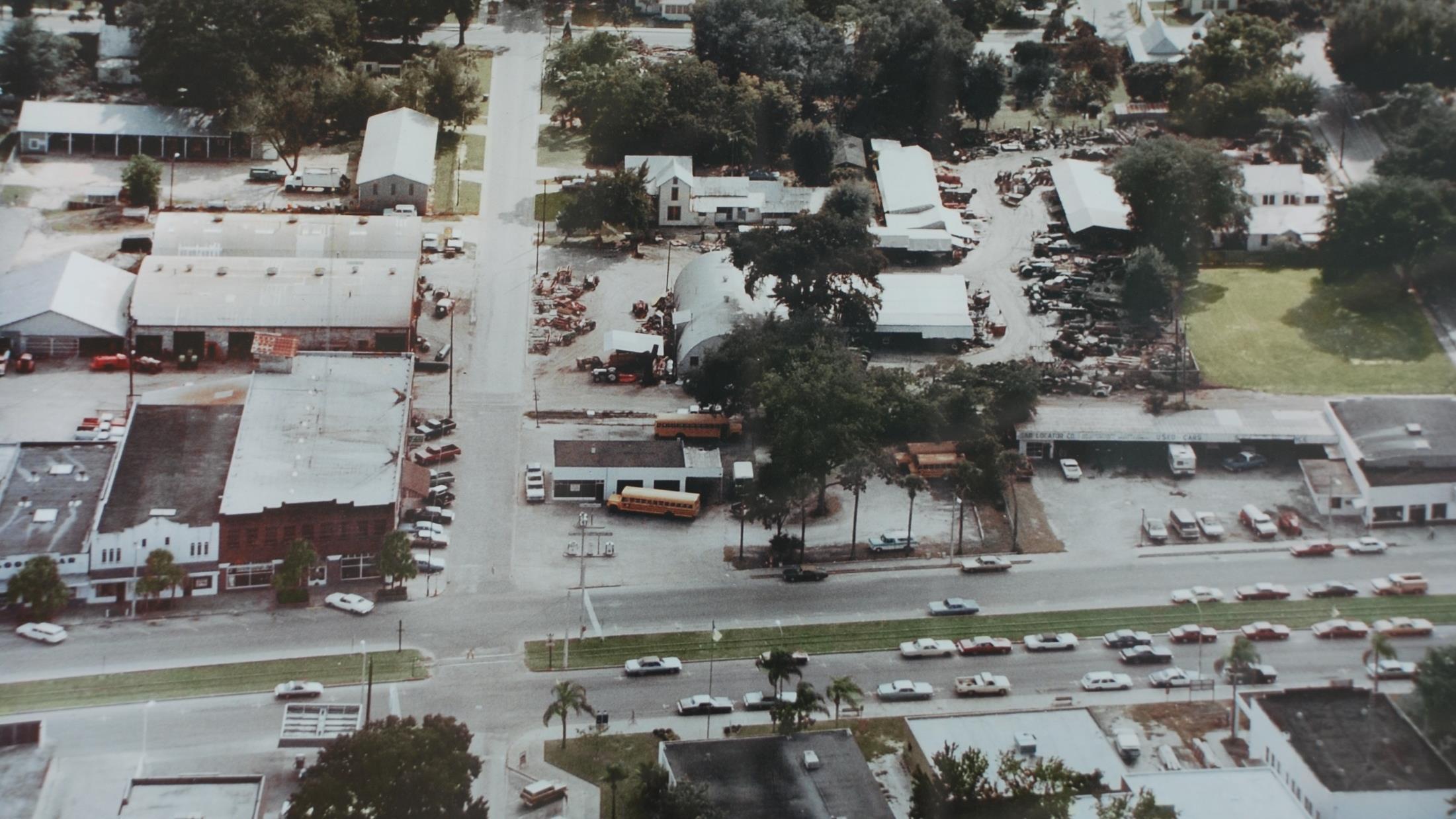
“Winter
Garbage”

Downtown Beautification



The Past Rail to (West Orange) Trail

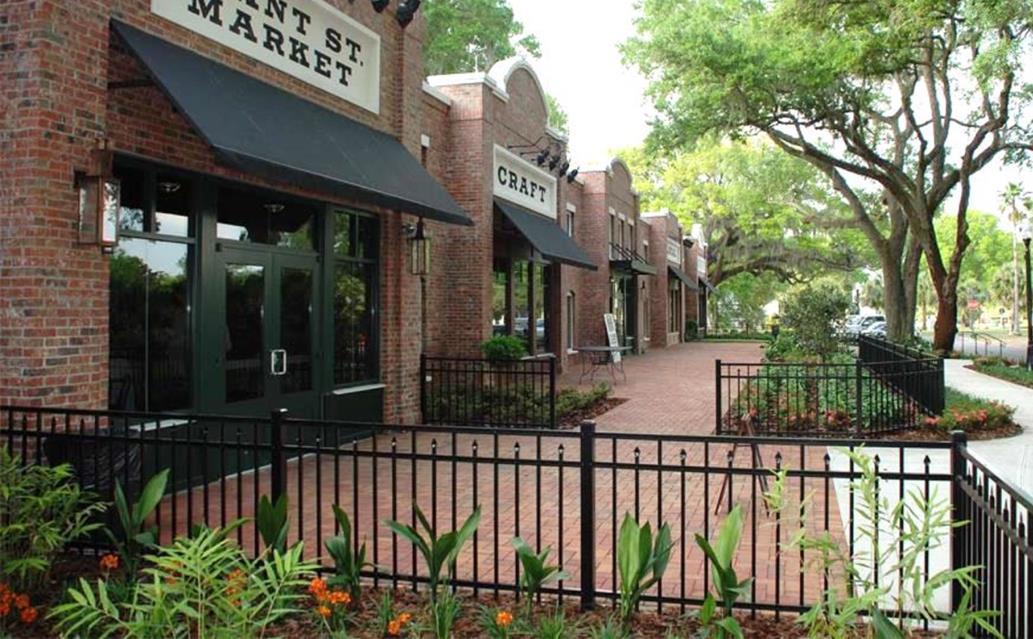

VISION ZERO SAFETY ACTION PLAN
Winter Garden, Florida
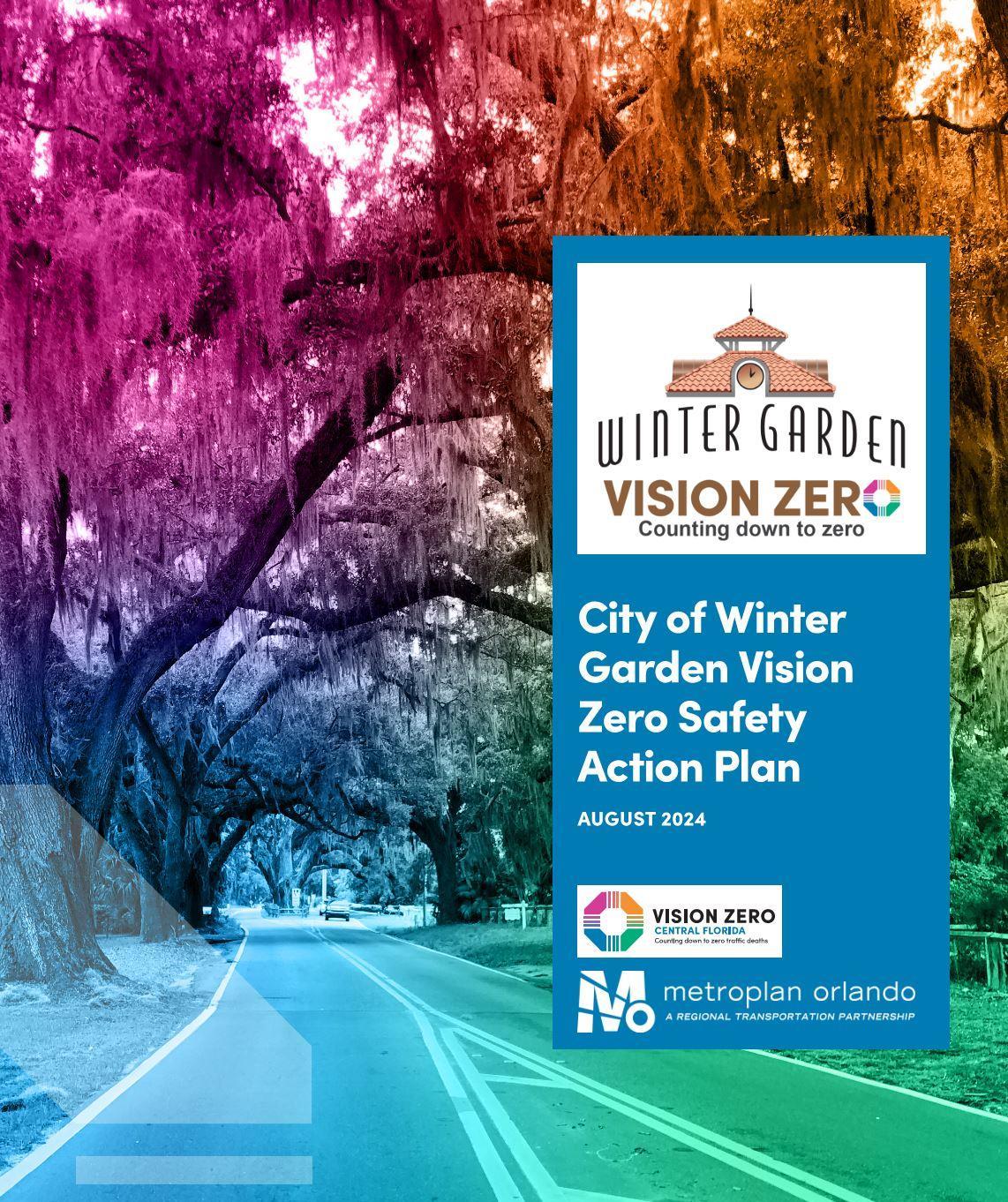
Vision Zero Safety Action Plan
Project Timeline:
• Signed Grant Opportunity Letter in August 2022.
• Project kickoff with the City’s consultants (Kittelson & Associates) in October 2023.
• Adopted Resolution 24-02 in January 2024 committing to zero fatalities and a 50% reduction in severe injuries by 2040.
• Winter Garden’s City Commission adopted the final City of Winter Garden Vision Zero Safety Action Plan on August 22, 2024.
Public Engagement
• Event 1: Pop Up Event at the Winter Garden Farmer’s Market - October 4, 2023
• Event 2: Spring Fever in the Garden Special Event - April 6, 2024
Takeaways: Common themes emerged from the community input including the need for improved bike and pedestrian infrastructure, more transit options, better driver education, and more stringent enforcement of bad driver behaviors.
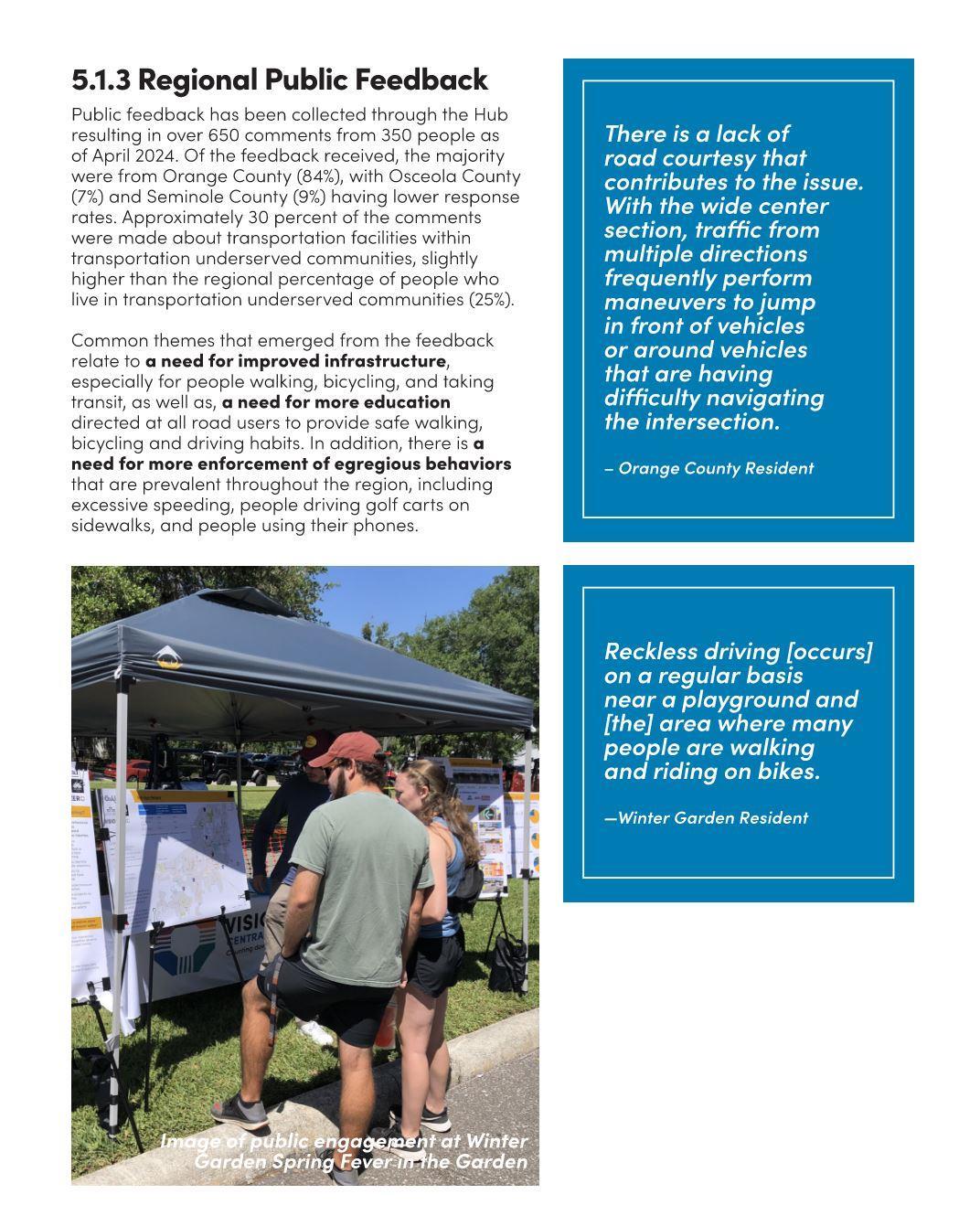
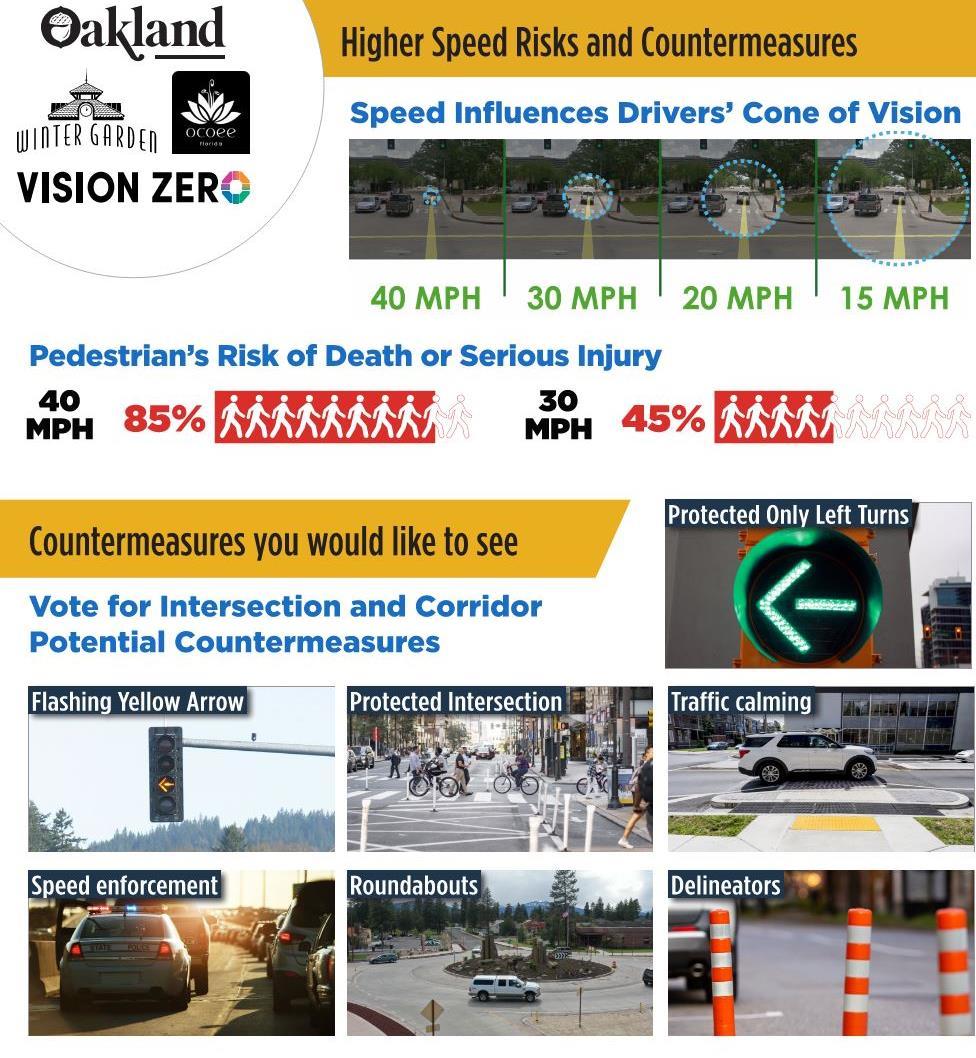
Stakeholder Engagement
Four (4) Working group meetings with City Staff across a wide range of City departments including Planning, Engineering, Public Services, Fire, Police, and the City Manager’s Office.
The noted barriers to safety included:
• Cost for projects.
• Driver behavior.
• Public perception of project impacts.
• Explosive growth
• Outdated infrastructure.
• Congestion from surrounding cities and counties.
• Lack of coordination with surrounding jurisdictions.
• Natural barriers like lakes limit connectivity.
• Old paradigms of high-speed, high-volume corridors
Analysis & Findings
• An average of 4.8 crashes per year result in severe injuries or fatalities.
• People walking and biking are involved in only 3% of crashes, yet account for 41% of serious injuries and 57% of fatalities (2018–2022).
Key contributing factors:
• Behavioral/driver factors — alcohol/drug use, distraction, aggression, speeding, lack of seatbelt use.
• Contextual factors — time of day, road conditions, and location (e.g., intersections).
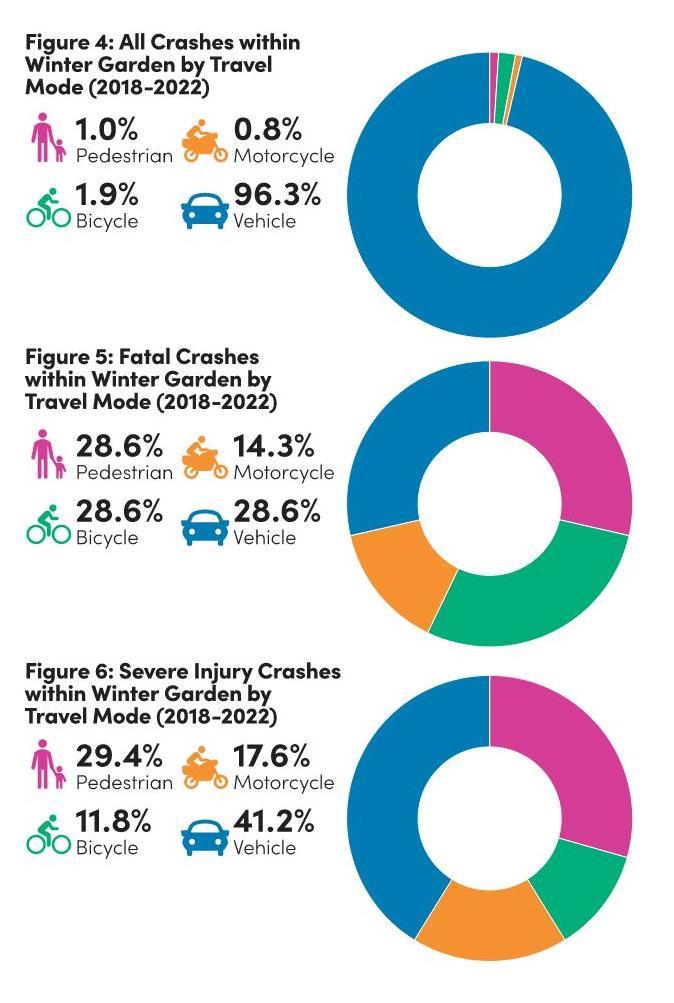
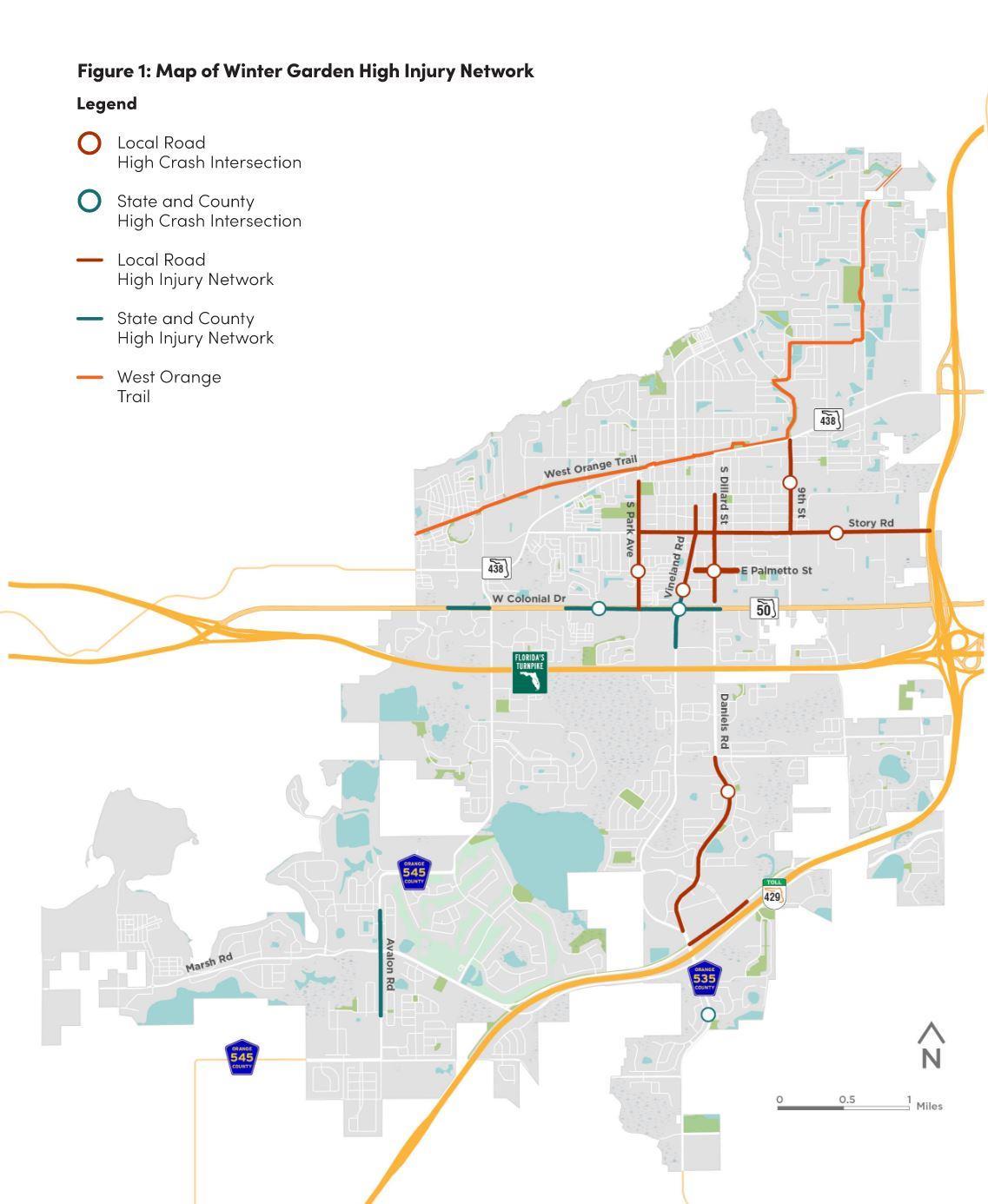
Analysis & Findings
Winter Garden’s High Injury Network (HIN):
• Identifies corridors and intersections with the highest rates of fatal and serious injury crashes.
• Places added focus on crashes involving people walking, biking, and motorcycling.
• Includes major County/State roads (e.g., W. Colonial Dr., SR 535) and key City roads (e.g., Dillard St., Story Rd., Daniels Rd.).
Projects
Establishing the City’s HIN highlighted projects aimed at eliminating fatal crashes and reducing serious injuries.
While some projects fall outside the City’s control, several local projects are under City authority, including:
• Dillard Street
• 9th Street
• Stoneybrook West Parkway
• Story Road
• Daniels Road

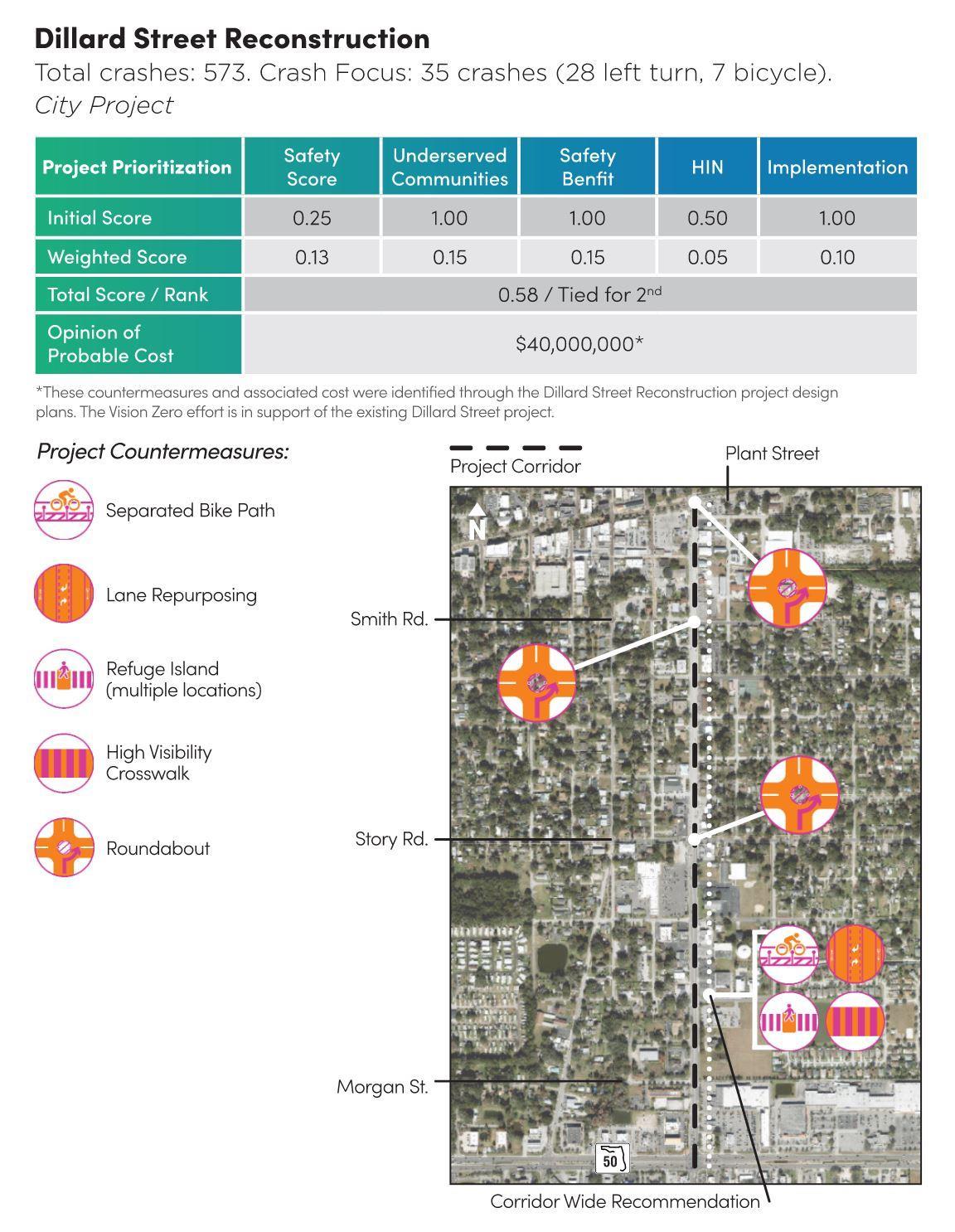
Project Highlight
One such project identified in the Plan is Dillard Street Reconstruction. Project Countermeasure Recommendations include:
• Adding a separated bike path
• Lane reproposing
• Refuge islands in multiple locations
• High visibility crosswalks
• Roundabouts
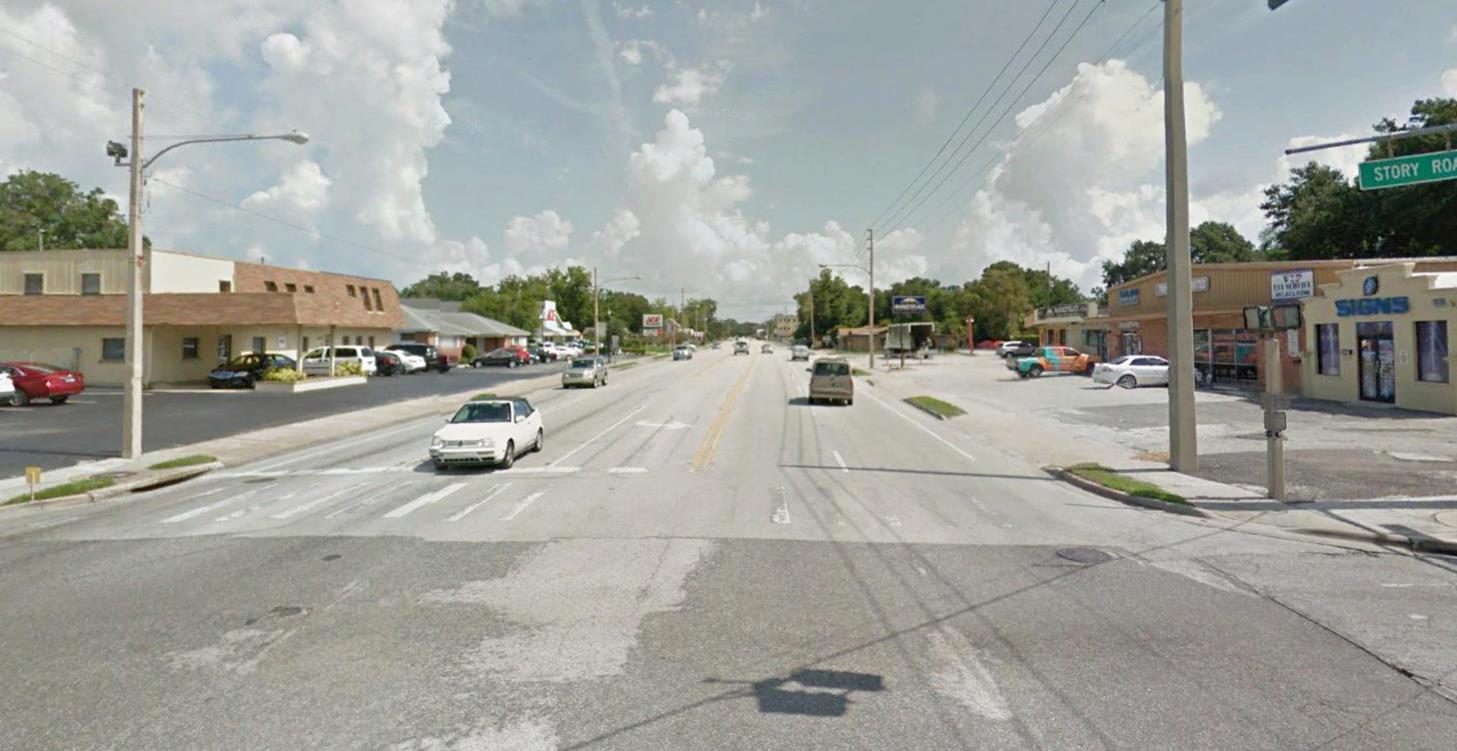
Next Steps
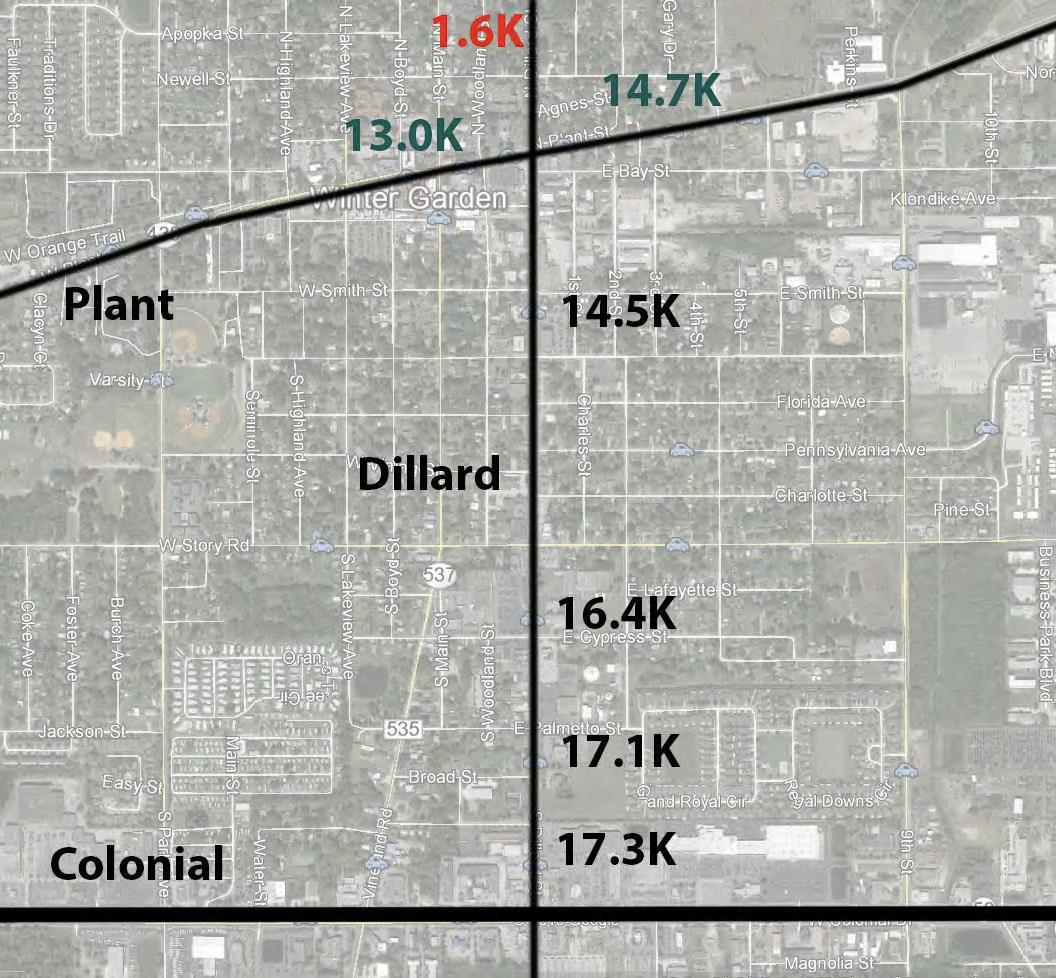
First Project: Dillard Street Reconstruction
The City is currently working on addressing the safety issues with Dillard Street identified in Safety Action Plan.
Creating and adopting the Safety Action Plan has allowed the City to pursue an implementation grant via USDOT Safe Streets for All.
Plant Street to Smith Street detail


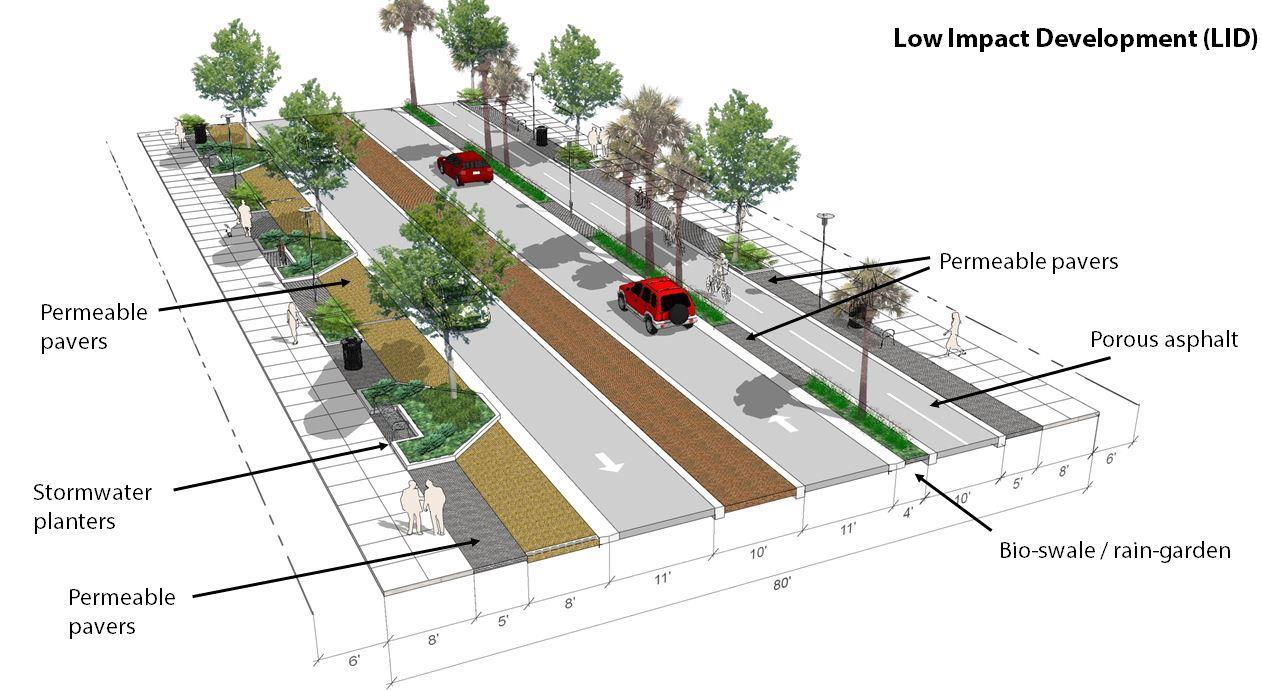
Takeaways
Vision Zero Safety Action Plan
• Provides a clear roadmap for allocating City resources to improve roadway safety and eliminate fatal crashes and reduce serious injury crashes.
• Opens new opportunities for grant funding to support safety projects.
• Engaged City staff, stakeholders, and the community to identify needs, priorities, and goals for a safer, multi-modal roadway network that works for everyone.
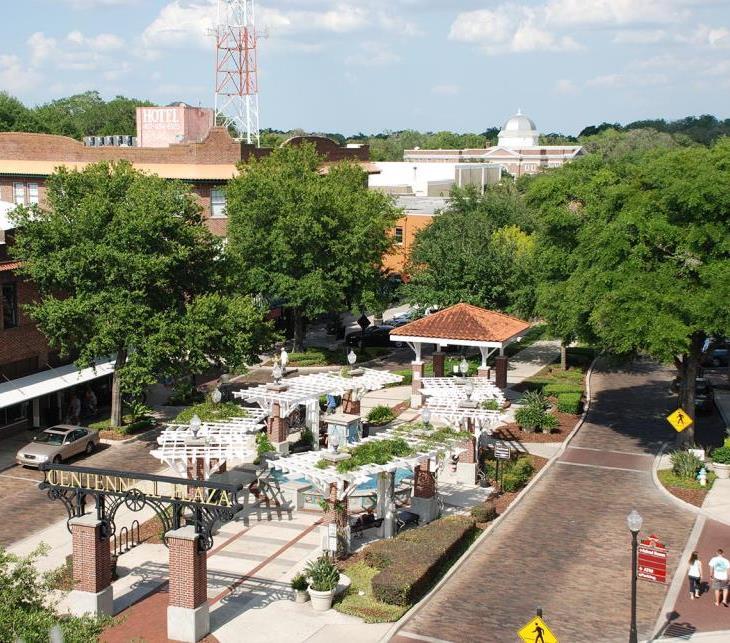

Thank you!
